Chemistry and Chemists № 1 2024
Journal of Chemists-Enthusiasts
| Content | Chemistry experiments - video | Physics experiments - video | Home Page - Chemistry and Chemists |
|
Chemistry and Chemists № 1 2024 Journal of Chemists-Enthusiasts |
Vegetable oils, ammonia and 'inverted' lava lamp - pt.3, 4 V.M. Viter |
|
Having noticed a mistake in the text, allocate it and press Ctrl-Enter
Castor oil and ammonia solution (levitation) - part 3
The aim of the current experiments is to do that the vegetable oil sinks to the bottom in the ammonia solution. Sunflower oil, with a density of about 0.92 g/cm3, does not possess sufficient density to achieve the desired outcome. Consequently, sunflower oil did not sink in a concentrated ammonia solution (with a concentration of approximately 25% and a density of about 0.92 g/cm3) without pre-cooling.
Касторовое масло и раствор аммиака (левитация) - часть 3 To achieve the desired result, sunflower oil had to be pre-cooled. This method of solving the problem is neither convenient nor the only one possible. For example, you can use other vegetable oils instead of sunflower oil. In addition to sunflower oil, only castor oil was available. I can buy corn and olive oils in the local supermarket. Several other types of vegetable oils can also be purchased online, but this will take some time. All that remains is to cross my fingers and find the densities of vegetable oils in the literature. It turned out that the density of corn and olive oils is approximately the same as that of sunflower oil (~0.92 g/cm3). Palm, coconut and soybean oils were not at all pleasing. The density of linseed oil is slightly higher (~0.93 g/cm3), so maybe linseed oil is suitable for our experiment. The density of castor oil turned out to be significantly higher than that of all the listed oils. It is ~0.95 g/cm3, which is more than enough for our purposes. Based on these data, castor oil should sink to the bottom in the aqueous ammonia solution. 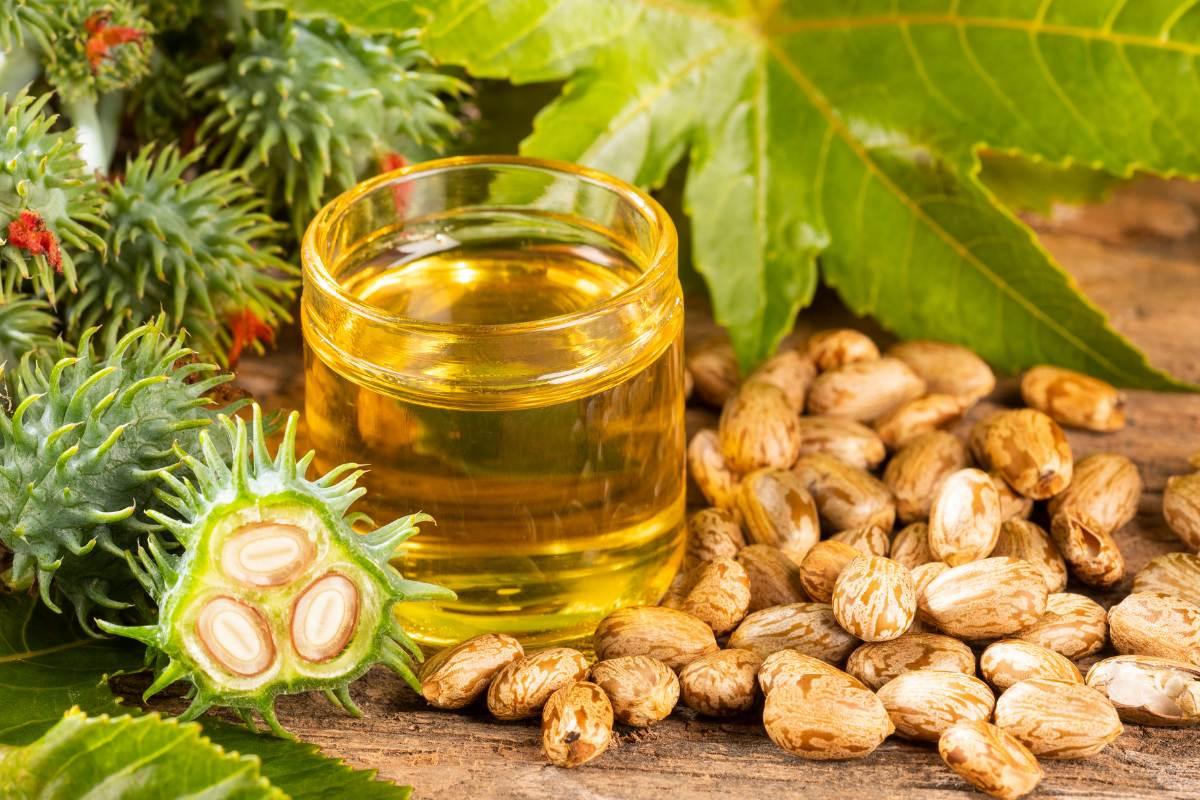 Let's begin the experiment. I carefully added castor oil to a large test tube containing a concentrated aqueous ammonia solution. However, the oil did not sink to the bottom; instead, it remained at the top, floating near the surface of the solution. Castor oil appeared like a large droplet with a strongly convex lower surface. The 'drop' submerged into the layer of the solution, yet it did not sink. I was adding more castor oil. As a result, the drop sank even deeper, separated from the surface of the solution and went down to the bottom, forming a lower layer of oil. The part of the castor oil remained on top, forming a top layer that resembled a convex lens. I was adding more oil; as a result, the 'lens' became more and more convex until the second 'drop' of oil separated and sank to the bottom. After this, some castor oil also remained floating on the surface of the solution. I added the next portion of castor oil. The main part of the castor oil sank to the bottom; some oil remained floating on top. I gently pressed the top oil layer with a glass rod, causing it to sink to the bottom. When I edited the video of the experiment, I discovered that the first small drop of castor oil added sank to the bottom immediately. The next portion of oil remained on the surface of the solution until a sufficient volume of oil was added (as described above). I assume that the surface tension prevented the oil from sinking immediately, although the density of the oil was higher than the density of the ammonia solution. Thus, the primary objective of the experiment was accomplished: the vegetable oil sank to the bottom of the test tube containing an ammonia solution. The subsequent goal is to achieve the 'levitation' of castor oil in an aqueous ammonia solution. This requires adding a specific amount of distilled water to increase the density of the ammonia solution until it matches the density of castor oil. As a result, drops of castor oil will neither rise nor go down but remain in a state of equilibrium at any point within the ammonia solution. I added some distilled water to the test tube and could clearly see the water sinking to the bottom because it was heavier than the ammonia solution. I immersed the glass rod and carefully rotated it over the layer of the oil. The oil did not rise, because little water was added. I added more water and gently stirred the solution with the glass rod. I repeated the described operations until the oil formed a ball, which came off the bottom with the help of a glass rod, rose to the middle of the test tube, and then slowly sank to the bottom. Now, it was necessary to add a minimal amount of distilled water to achieve the 'levitation' of castor oil. Indeed, after adding a small portion of water, the oil formed a ball, which came off the bottom and 'hung' in the ammonia solution. The oil did not sink to the bottom or rise to the surface of the solution. By the way, the solution did not even have to be stirred with a glass rod to separate the oil from the bottom. The picture I described above is a simplified one. To be sure of this, I mixed the contents of the test tube. The oil separated into droplets that floated throughout the entire volume of the solution. However, this equilibrium was not stable. After stirring was stopped, most of the oil slowly rose to the surface. This event did not come as a surprise. When I wrote that the oil and the ammonia solution had the same density, it was a simplification. In reality, the ammonia solution was not homogeneous - there was a gradient of ammonia concentration along the height, which arose as a result of the addition of water. The water has a higher density than the ammonia solution, so it sank to the bottom. The concentration gradient gave rise to a density gradient. Near the bottom of the test tube, the concentration of ammonia in the solution was the lowest, and the density was the highest. When moving from the bottom to the surface, the ammonia concentration increased, and the density of the solution decreased. As a result, the ball of oil floated above a solution that was more dense than itself, and above the oil, there was a less dense solution. Of course, no phase boundary existed between the 'more dense' and 'less dense' ammonia solution. The ammonia concentration changed continuously, but this did not change the essence of the matter. When I thoroughly mixed the contents of the test tube, the concentration of ammonia levelled out, and the density of the resulting solution turned out to be higher than the density of castor oil. For castor oil to 'levitate' again, the solution density must be reduced by adding a concentrated ammonia solution to the test tube. First, I mistakenly added distilled water rather than ammonia to the test tube and mixed it. This time, the drops of castor oil floated to the surface much faster, combining into the top layer. The density of the solution became even higher (and the ammonia concentration became lower), so the oil rose readily. Realizing the mistake and repenting, I added a concentrated ammonia solution. As a result, the oil again began to 'levitate' in the middle part of the test tube. I intensively mixed the contents of the test tube to obtain an emulsion formed by two liquids with the same density. However, the oil dispersed, forming only large droplets; smaller droplets were not observed. After stirring, large drops quickly united. During the experiment, the castor oil became white and opaque, now resembling a white paste (the oil was initially yellowish and completely transparent). Ammonium soap was formed. As in the case of sunflower oil, the saponification reaction of triglycerides with ammonia took place. When standing in a closed test tube, the paste floated to the surface of the ammonia solution. I added another portion of a concentrated ammonia solution and stirred. The pasta sank. After 20 days, no further visible changes occurred. |
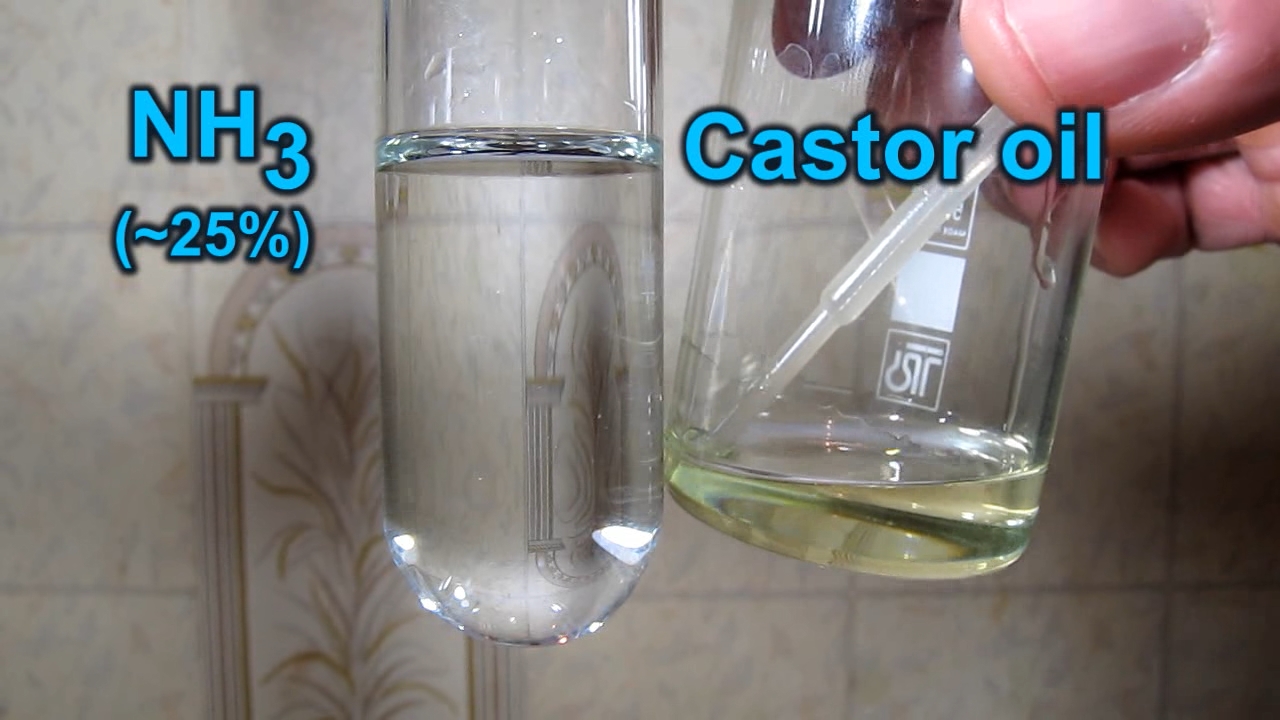
Castor oil and ammonia solution (levitation) |
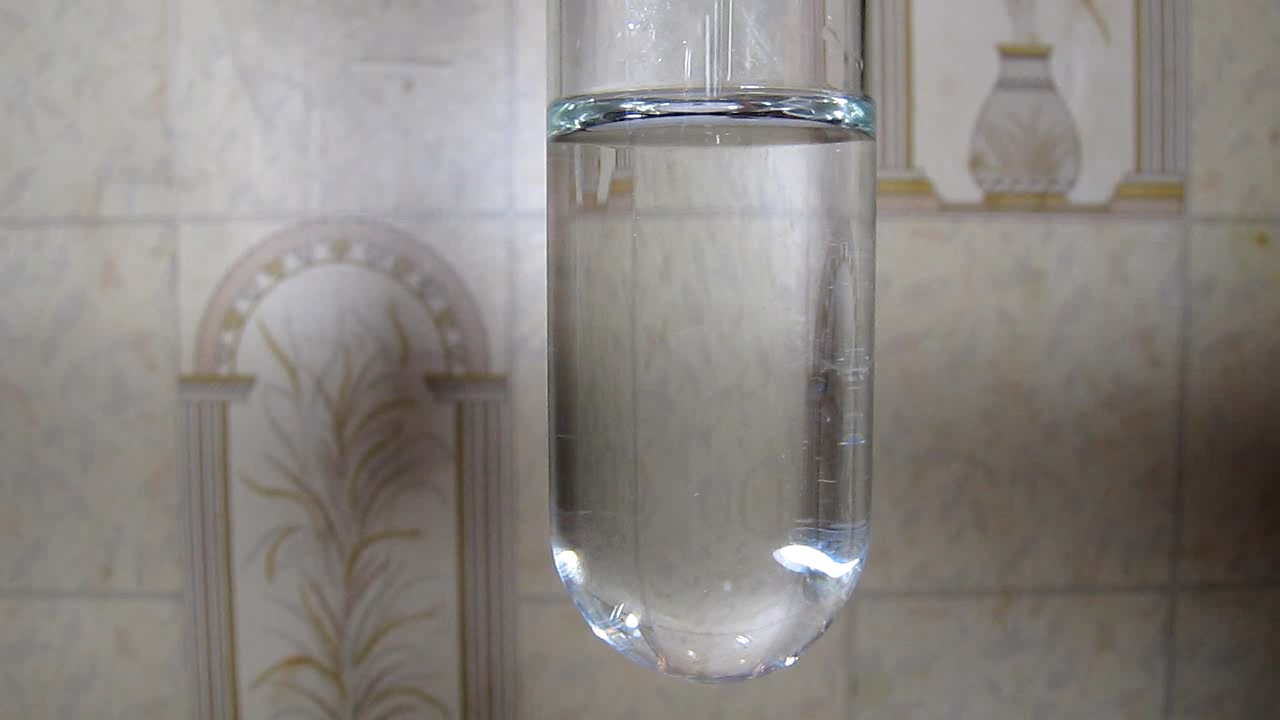
|
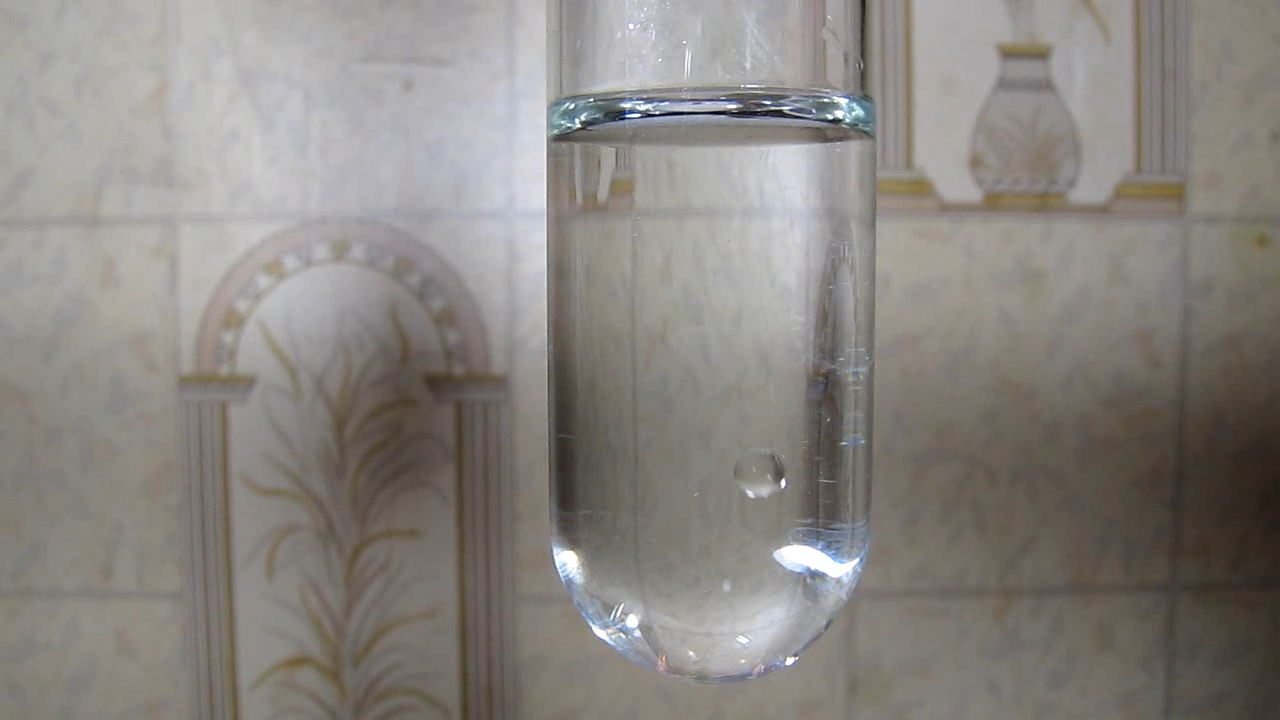
|
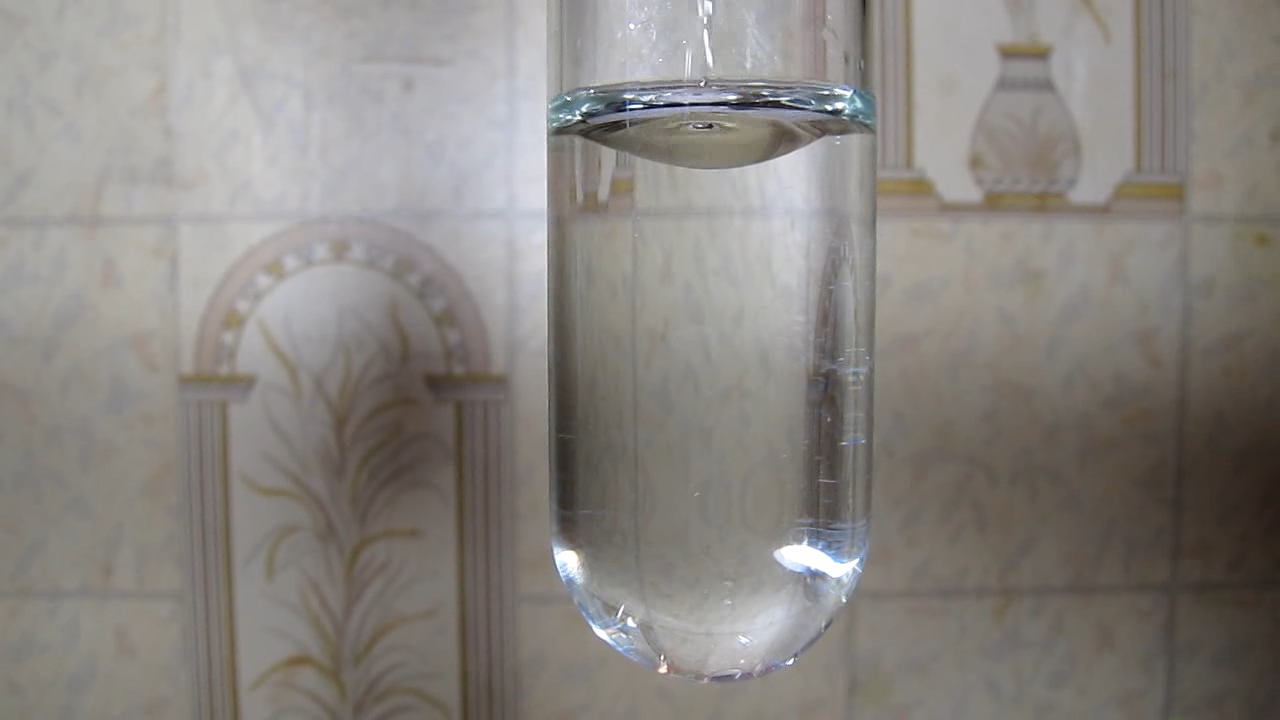
|
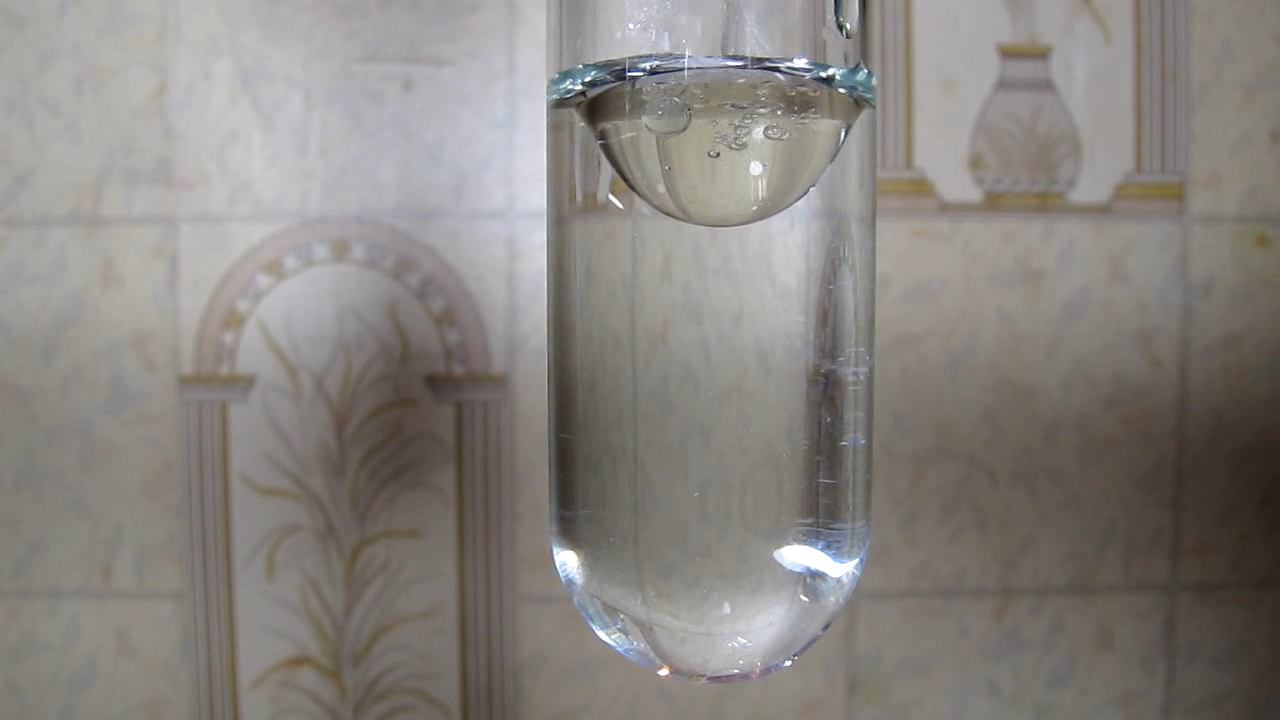
|

|
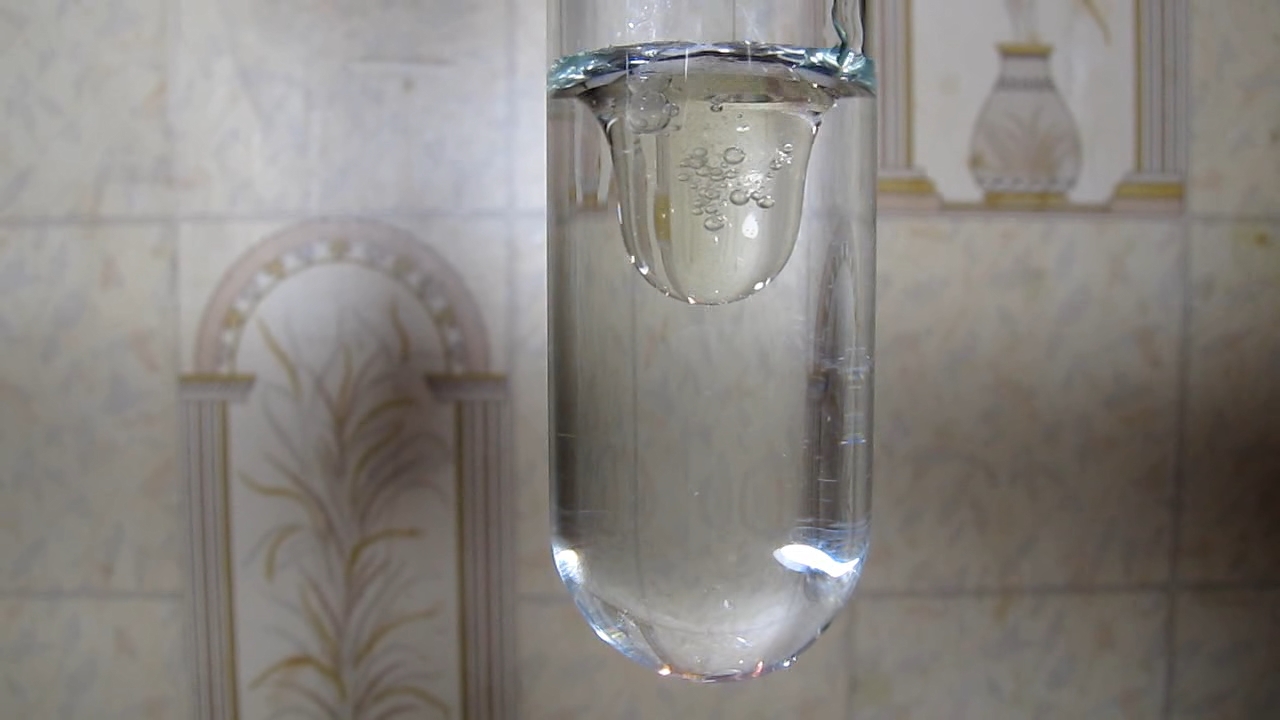
|

|
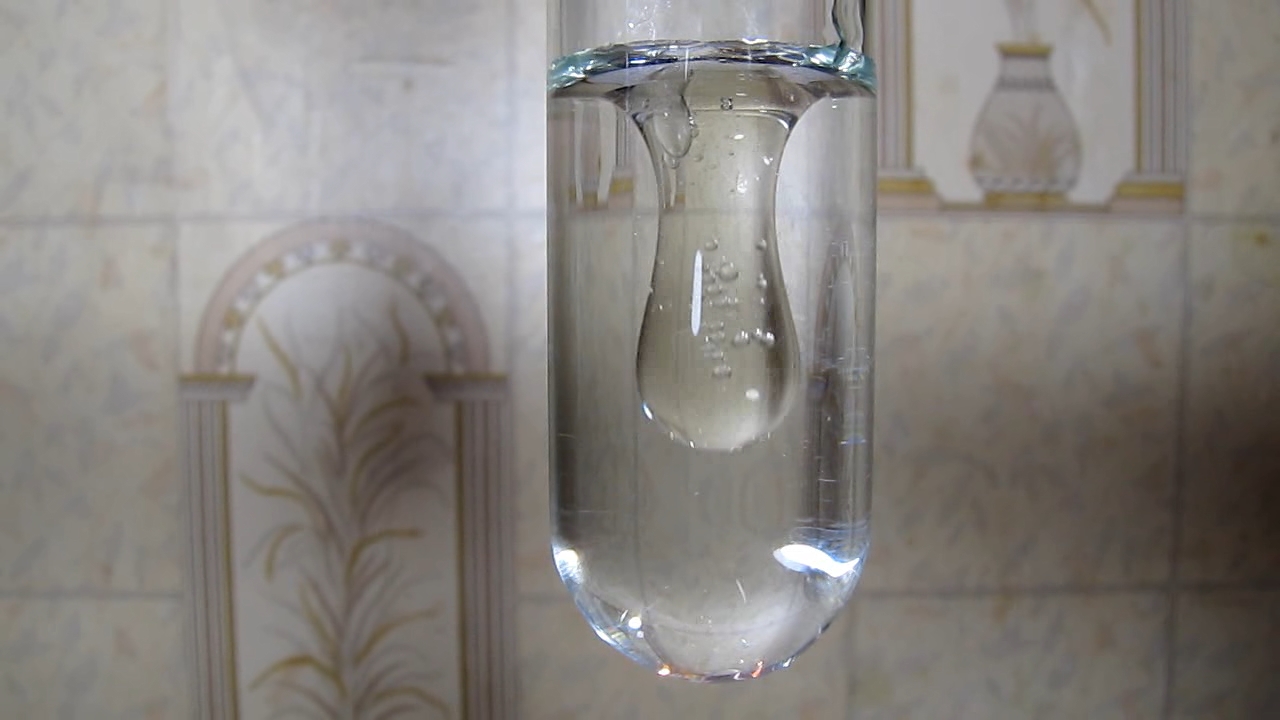
|
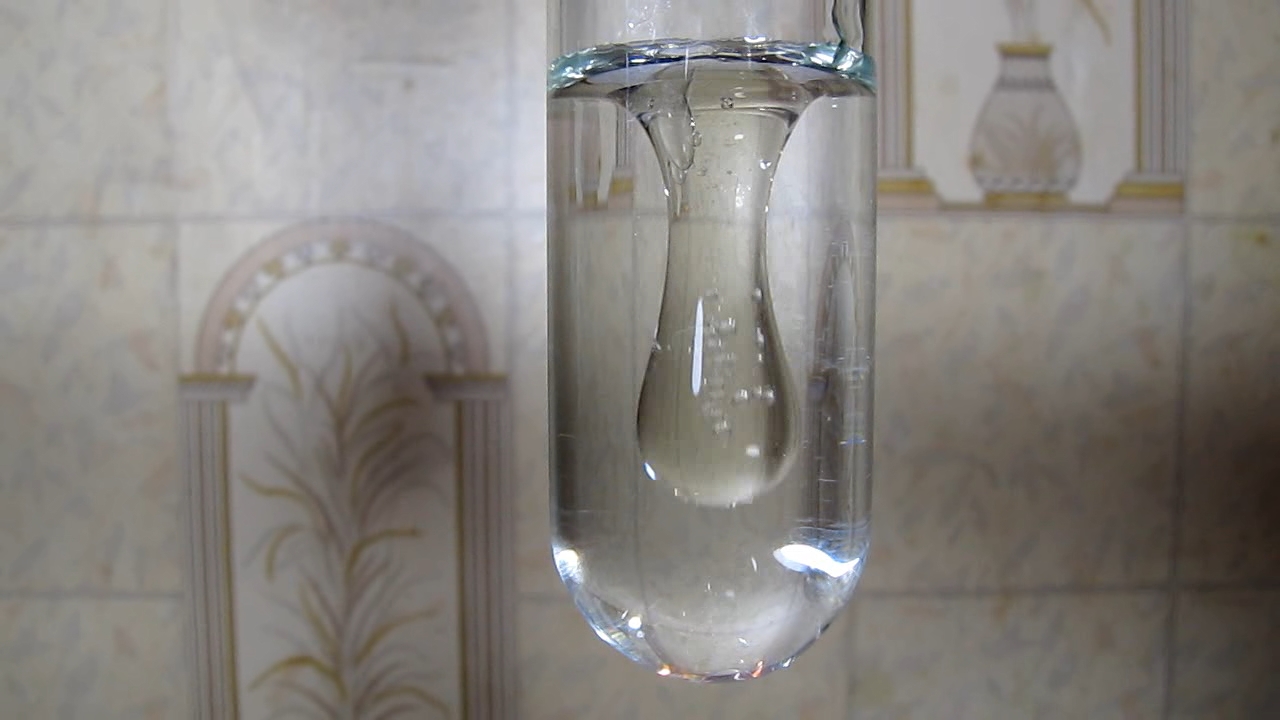
|

|

|

|

|
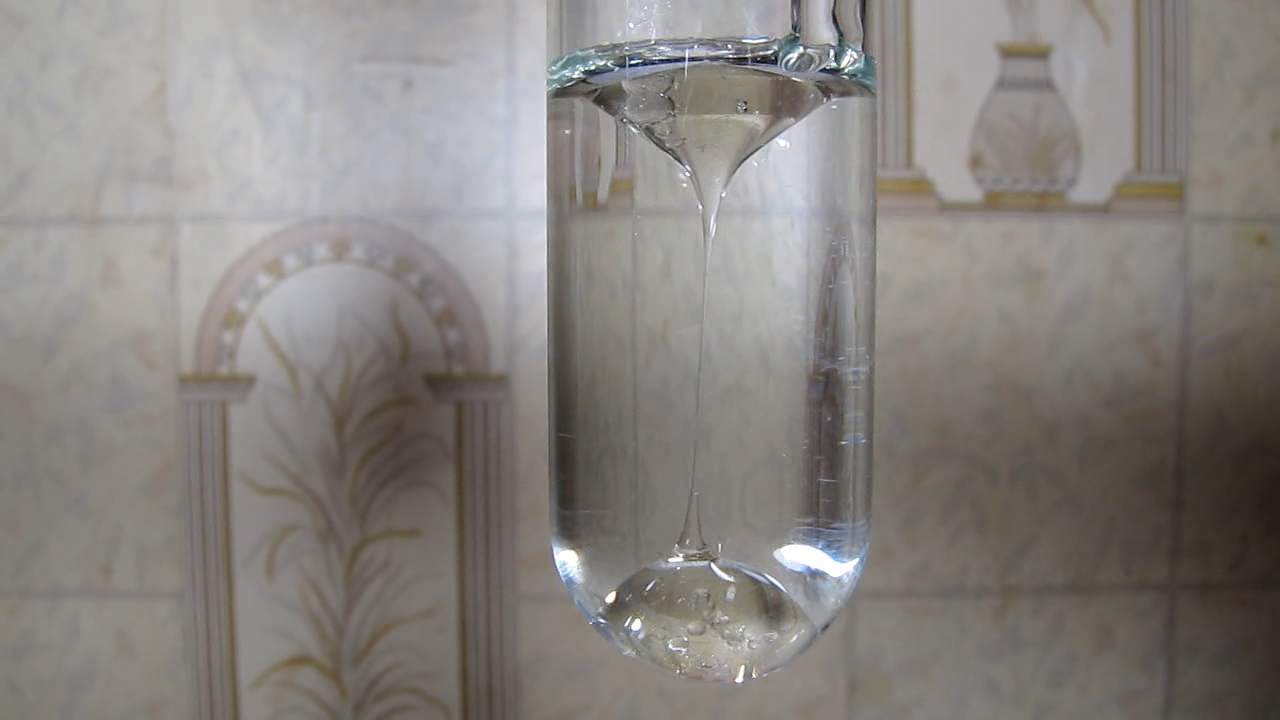
|
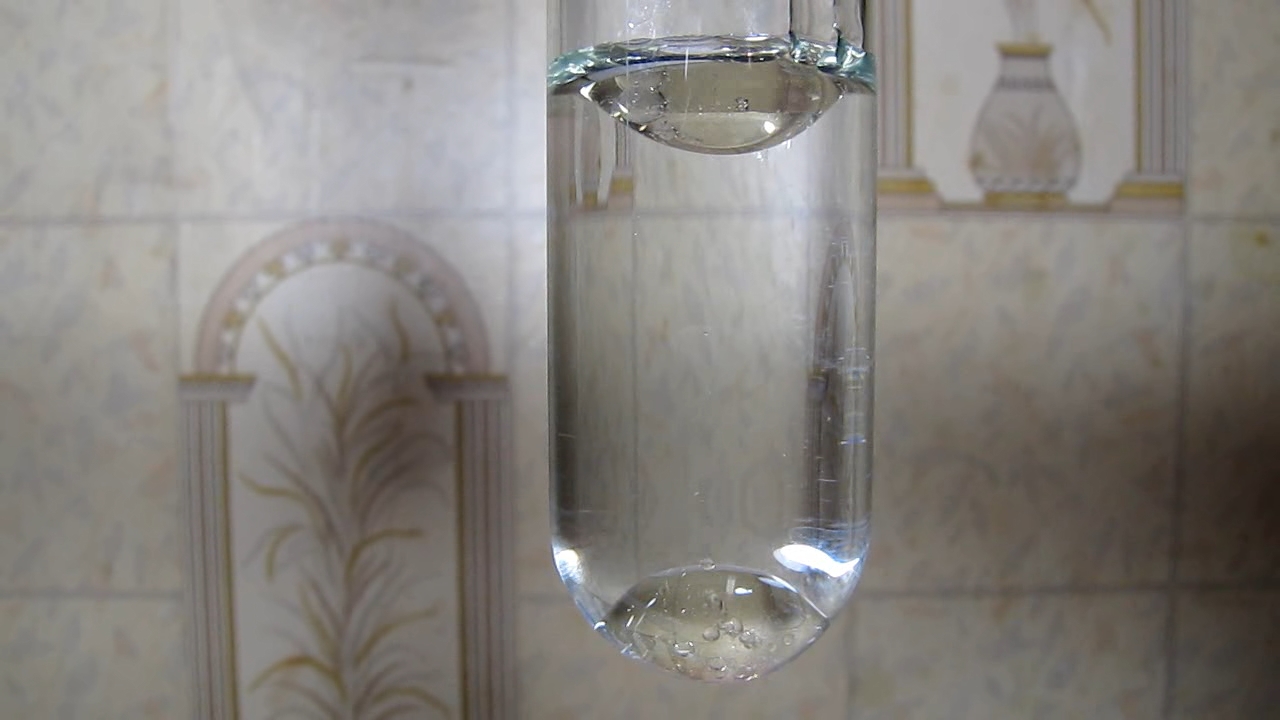
|
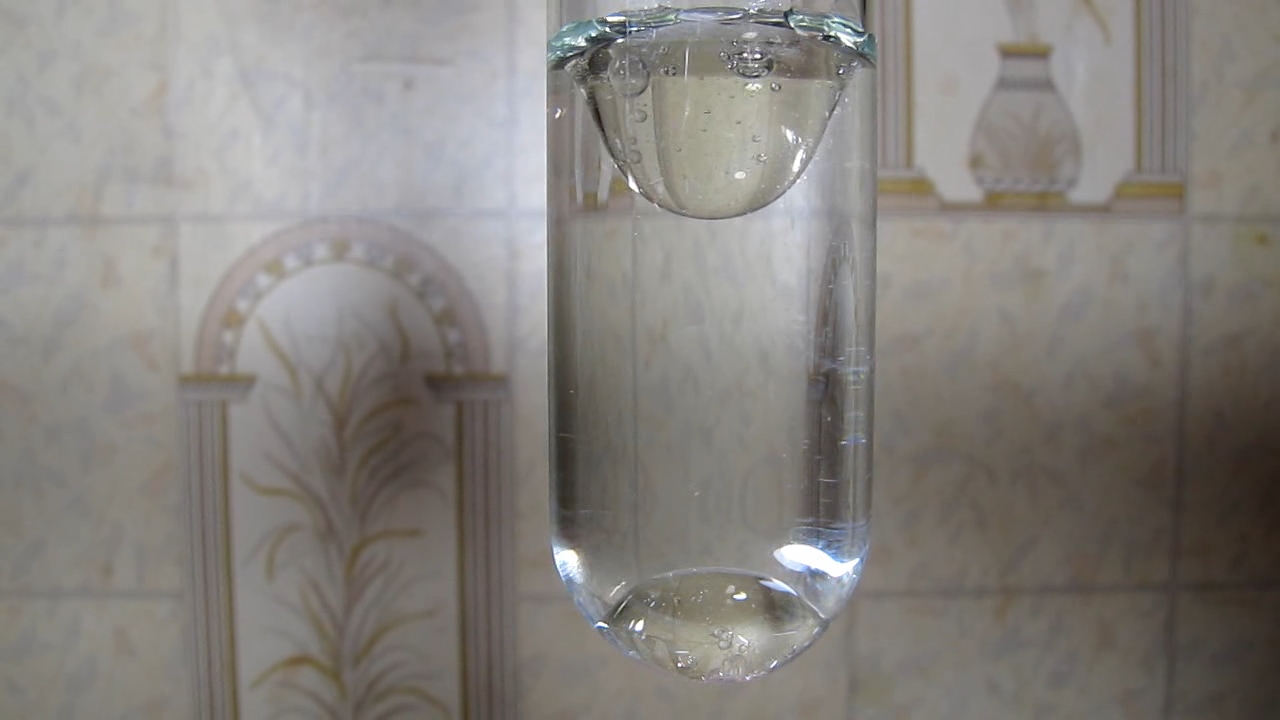
|
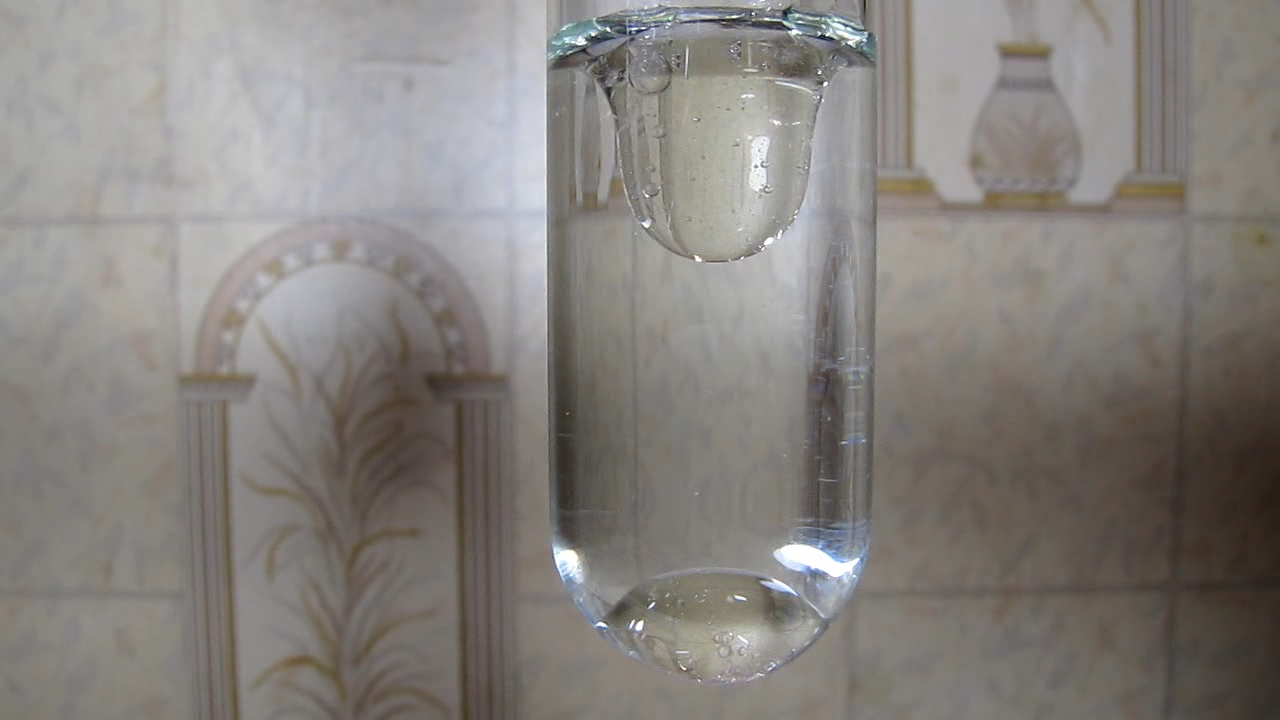
|
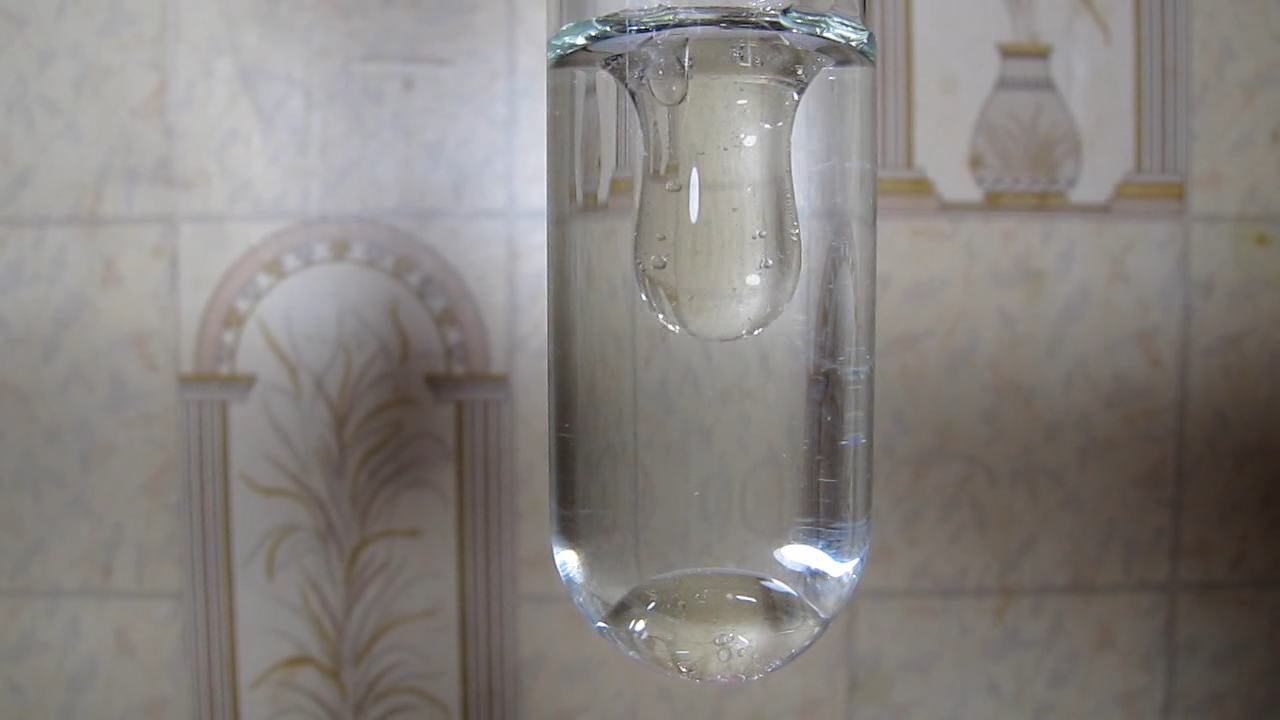
|
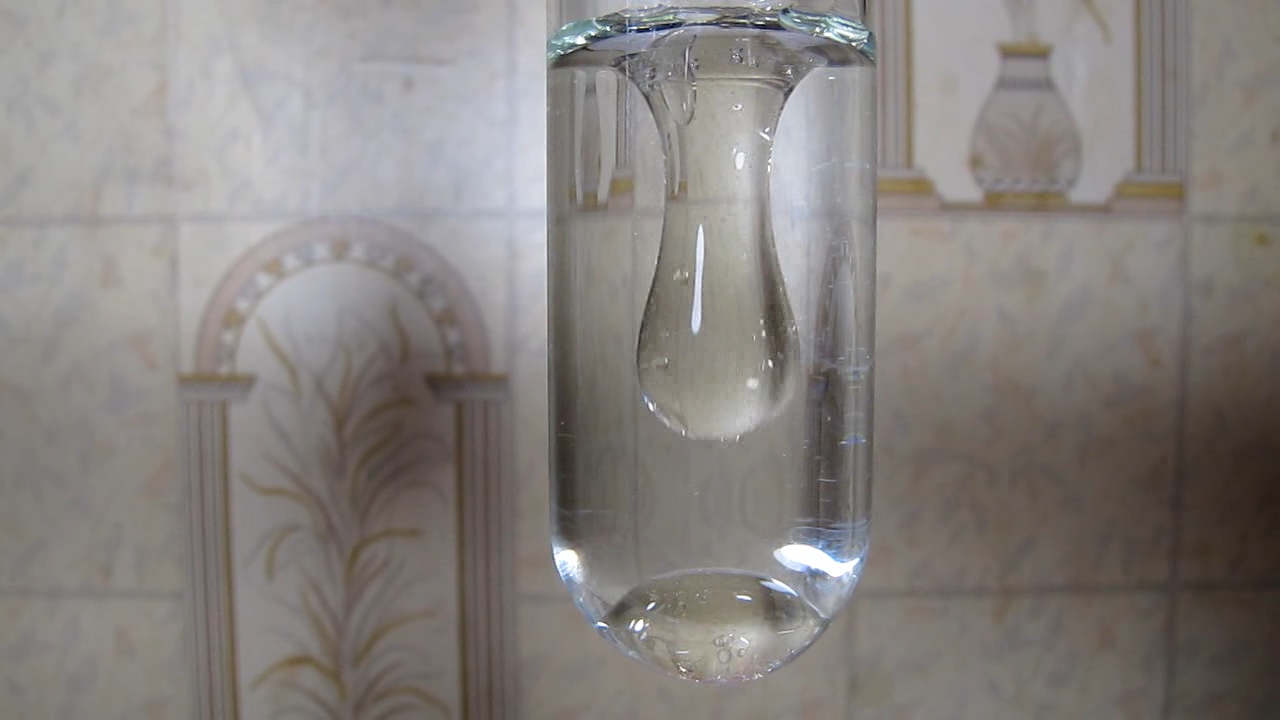
|

|

|
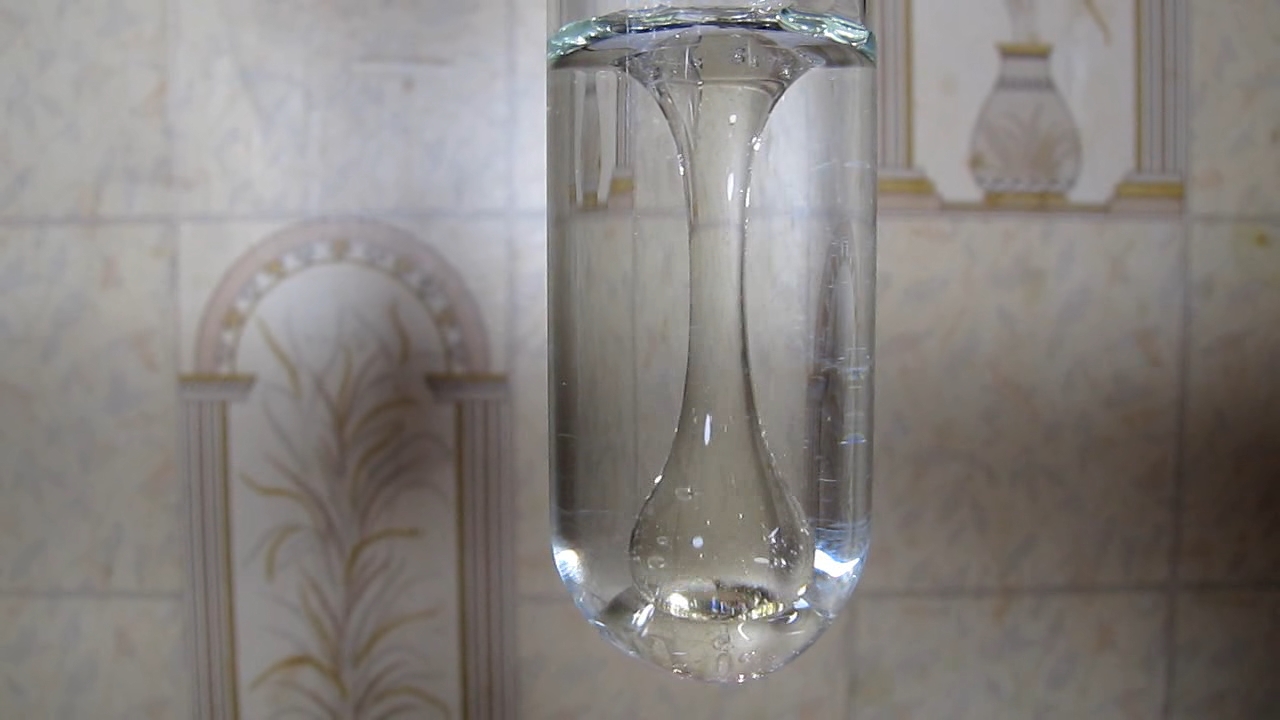
|
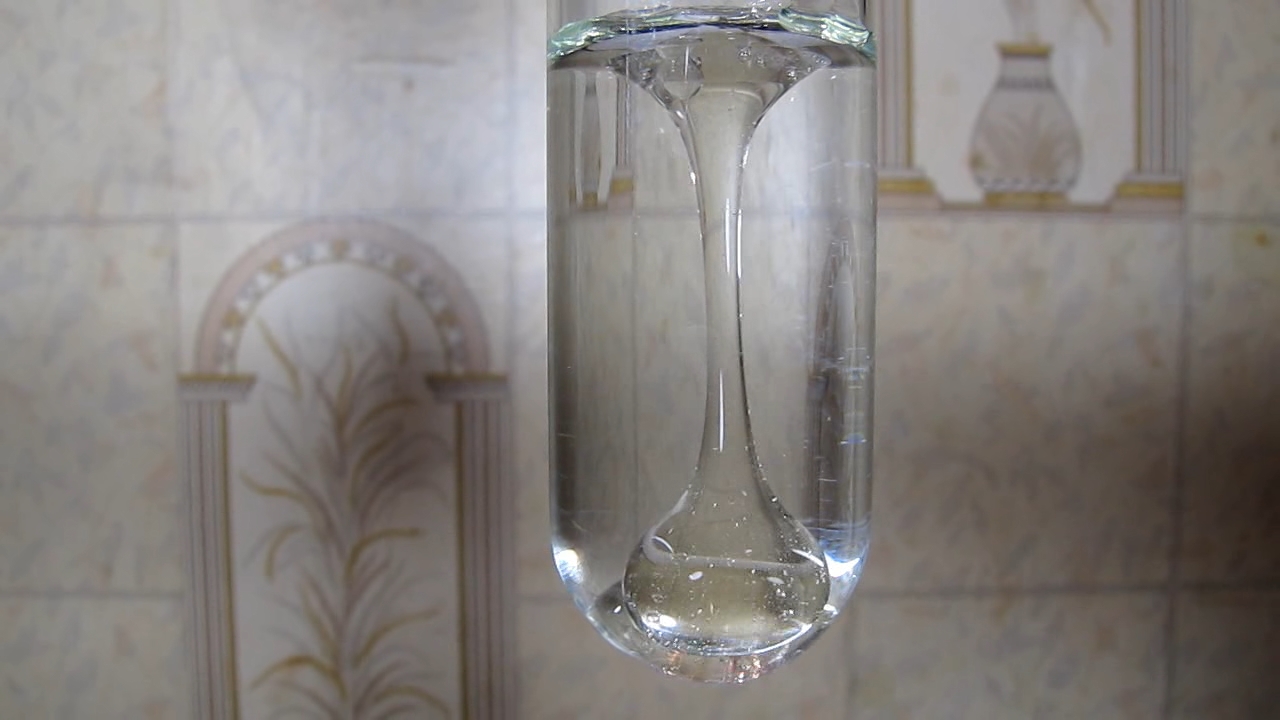
|

|
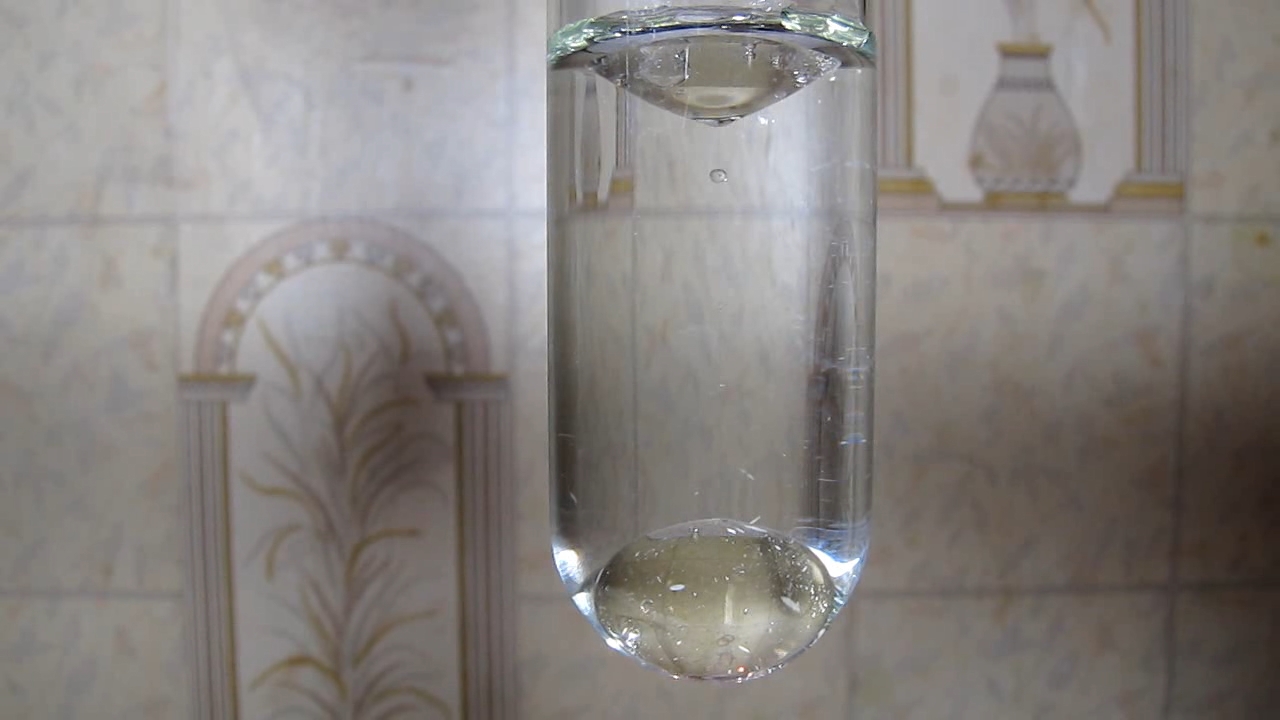
|

|

|

|

|

|
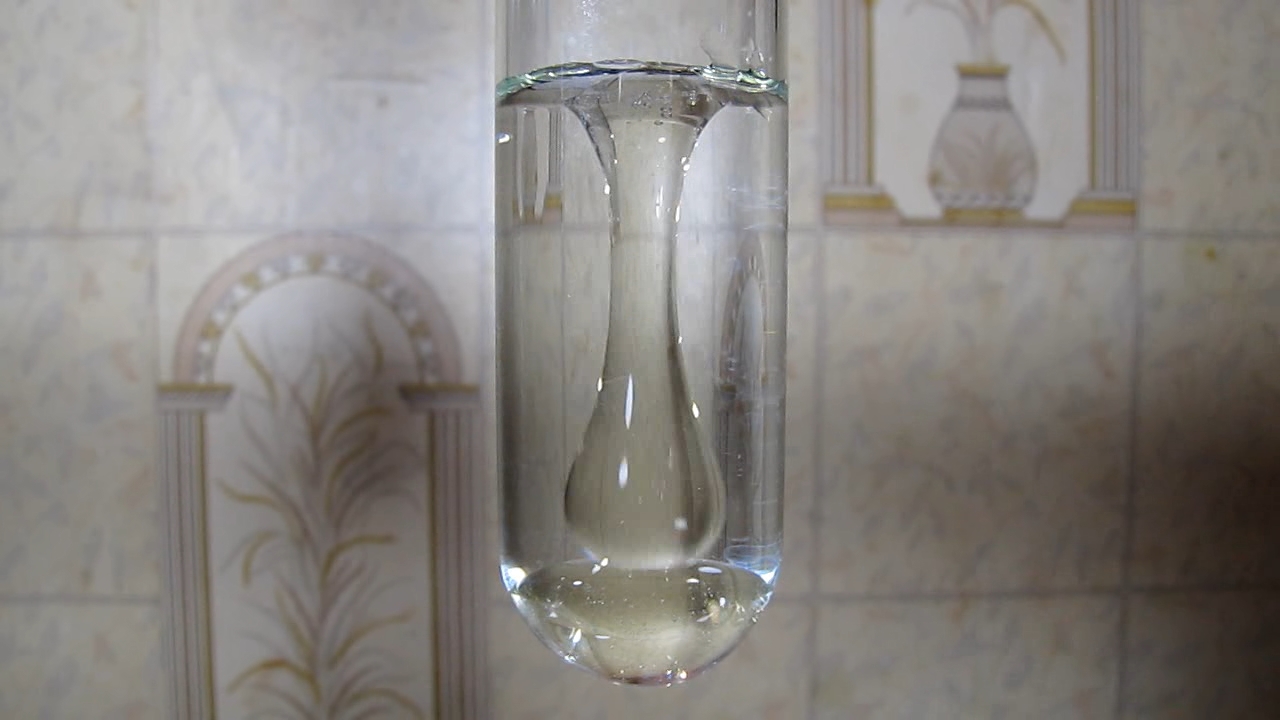
|
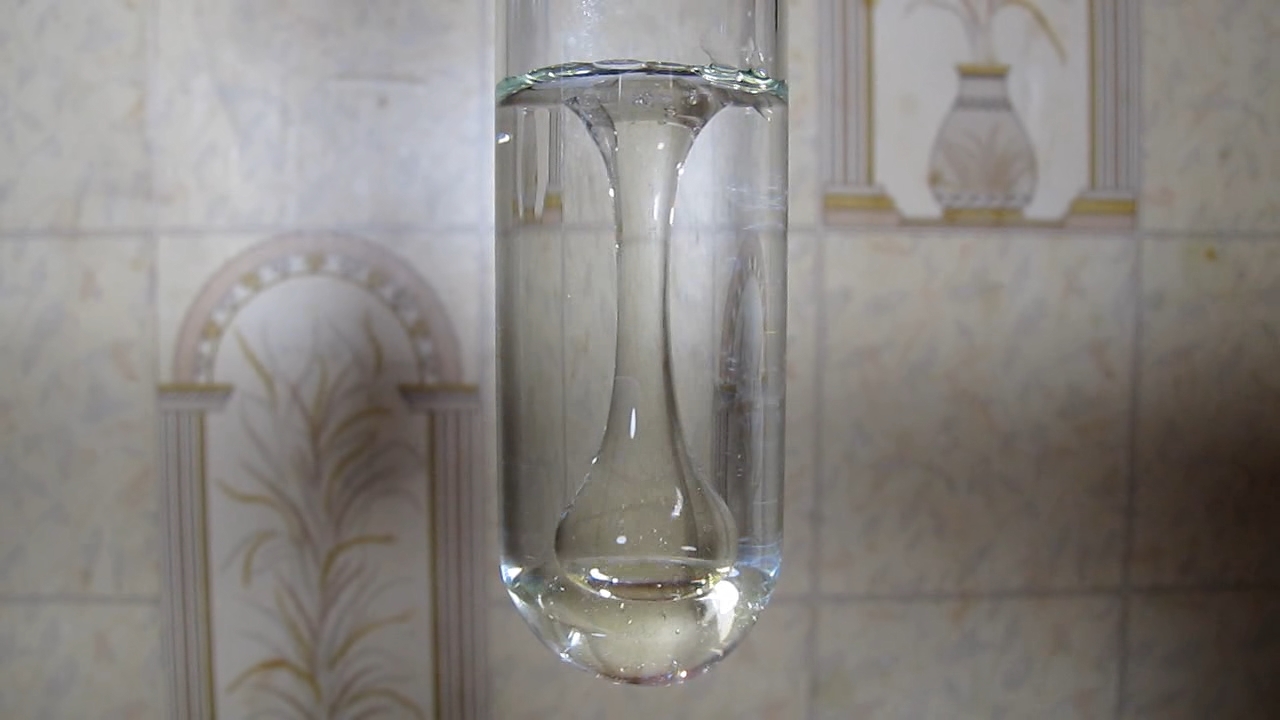
|
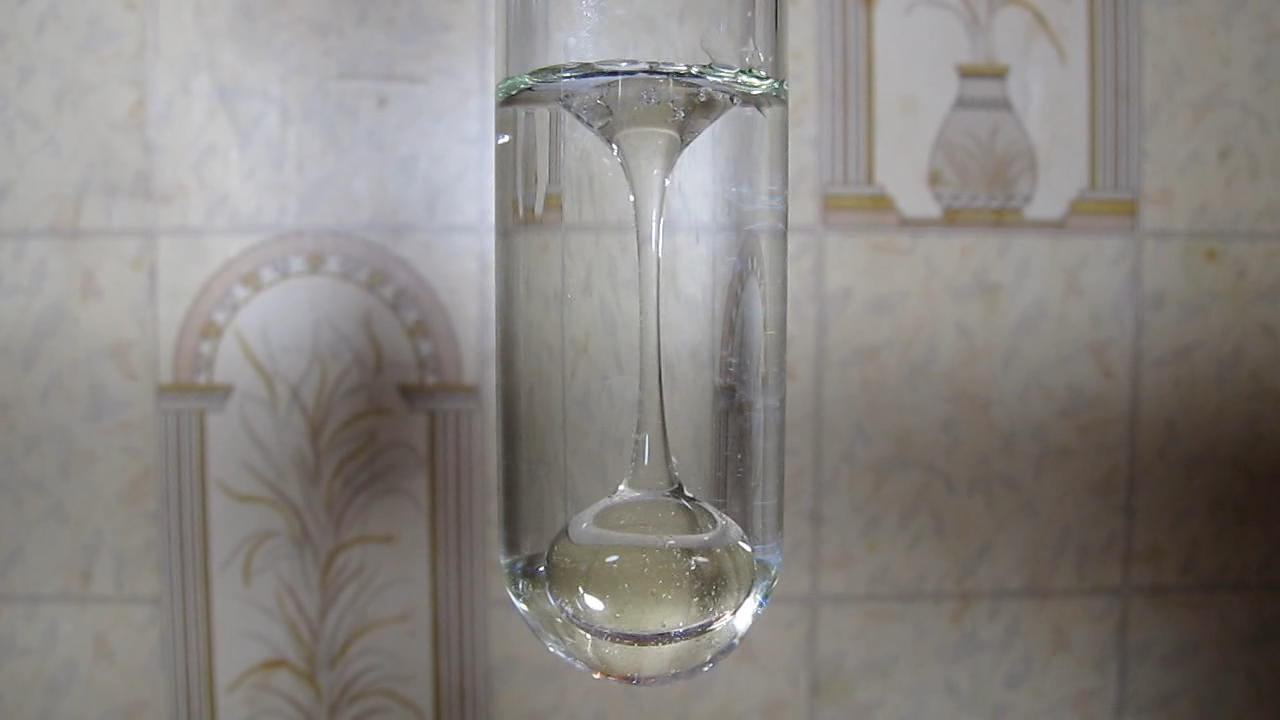
|

|
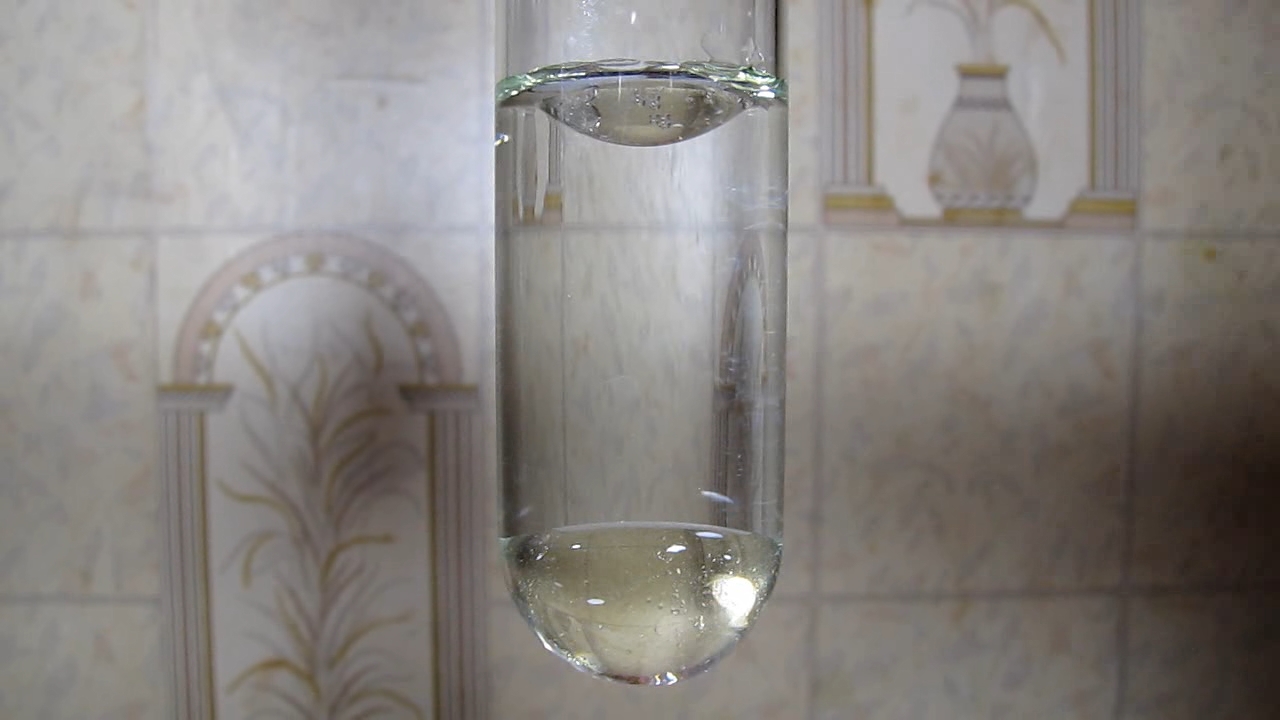
|

|
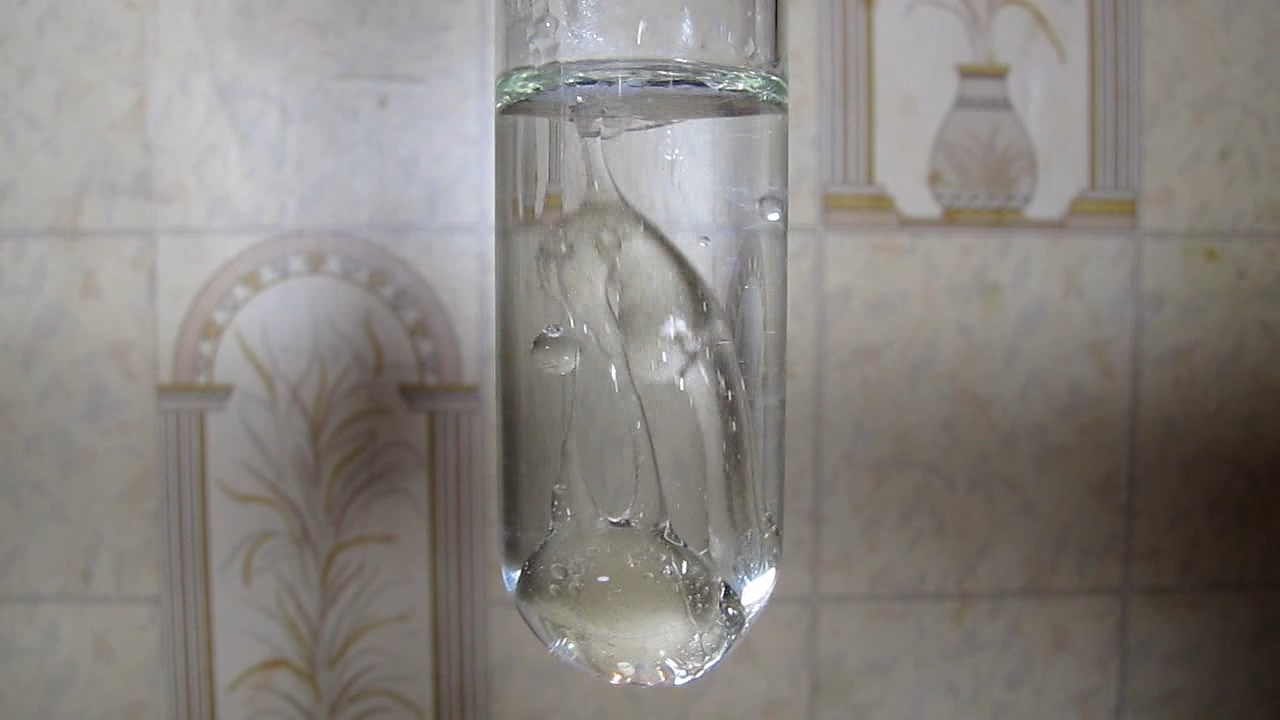
|
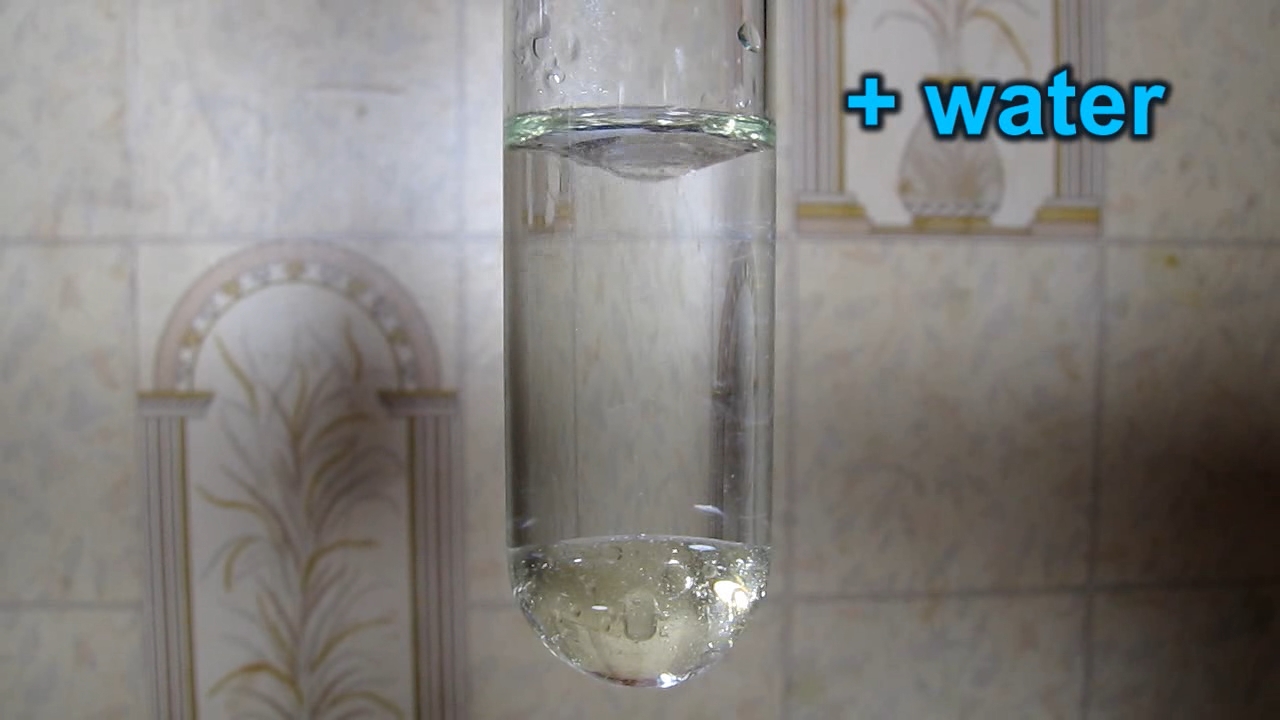
|

|
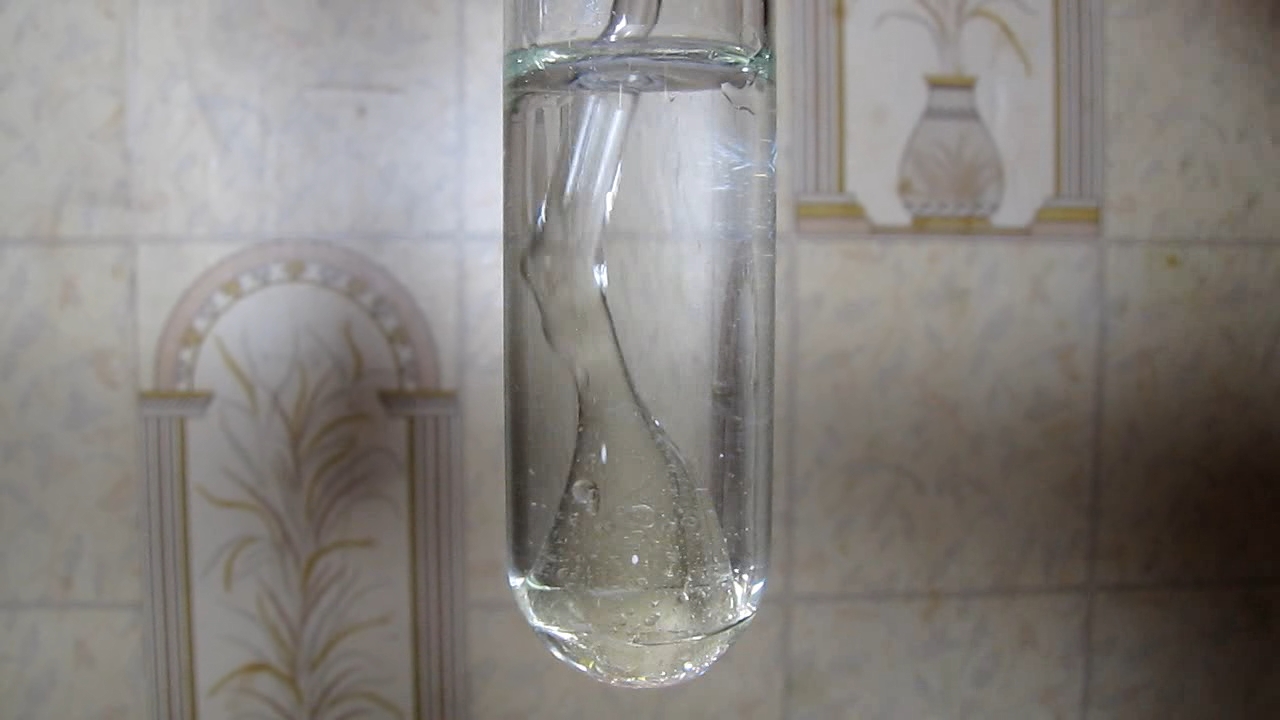
|
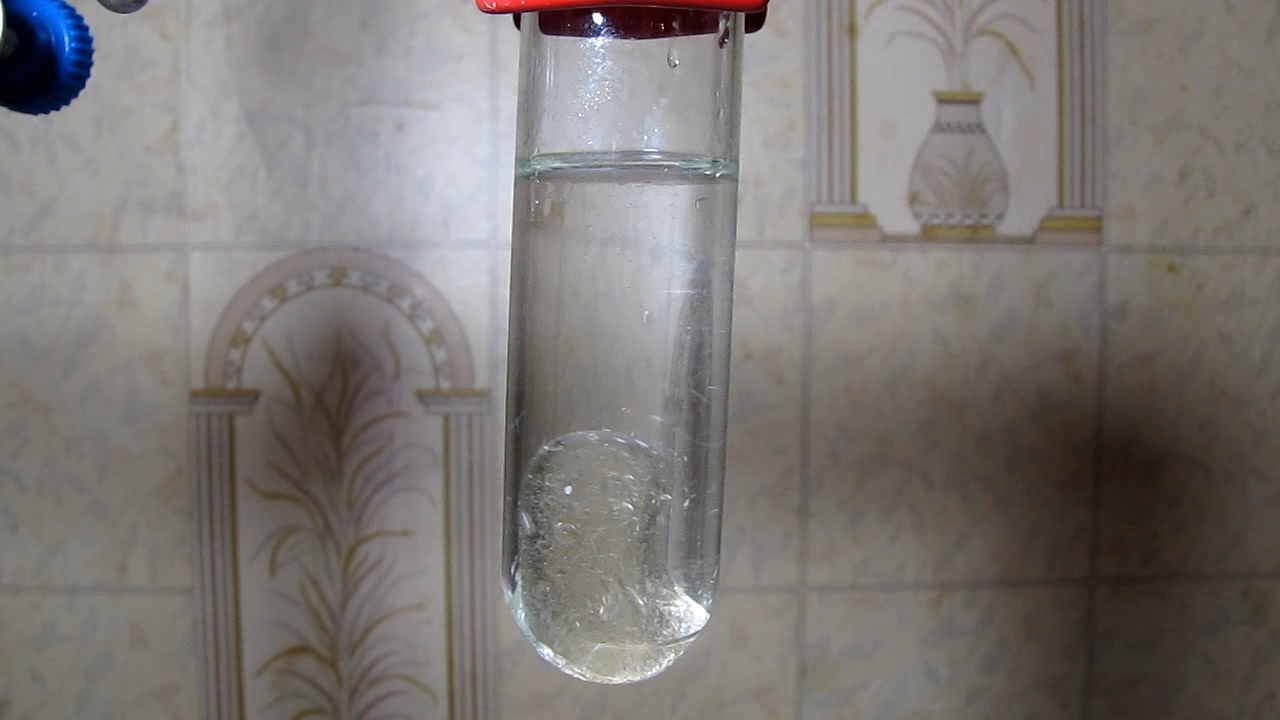
|
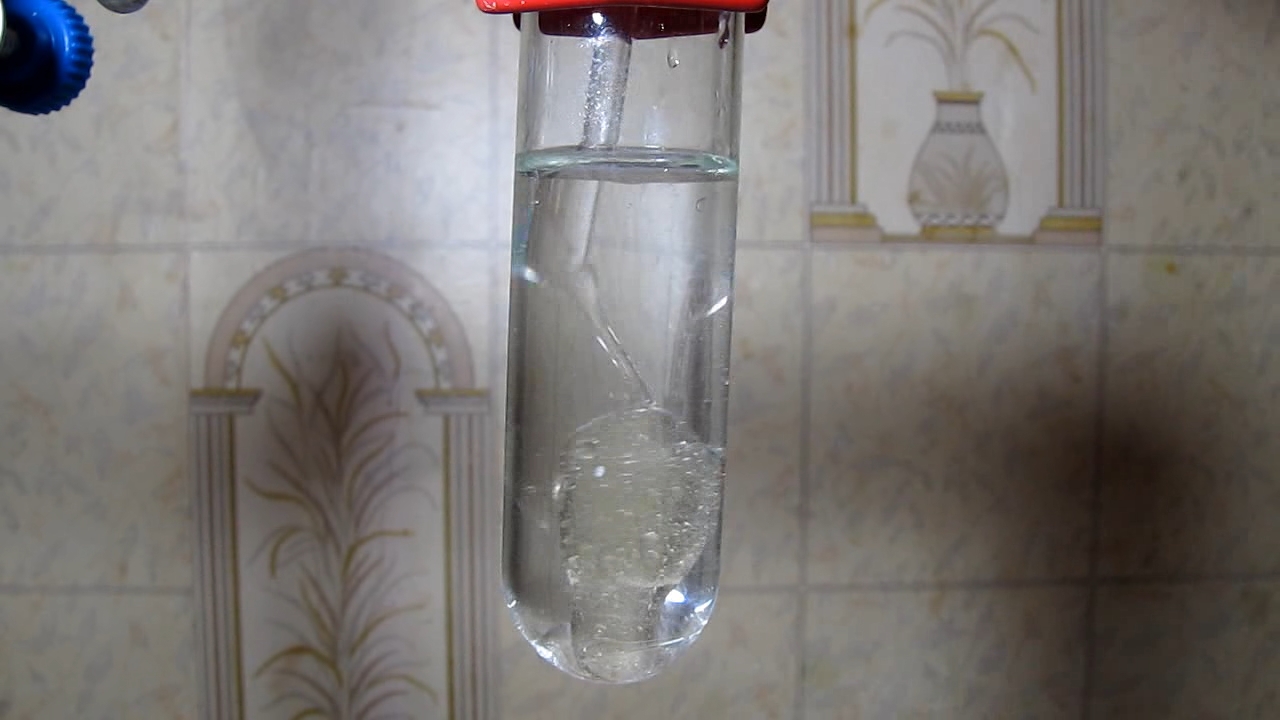
|
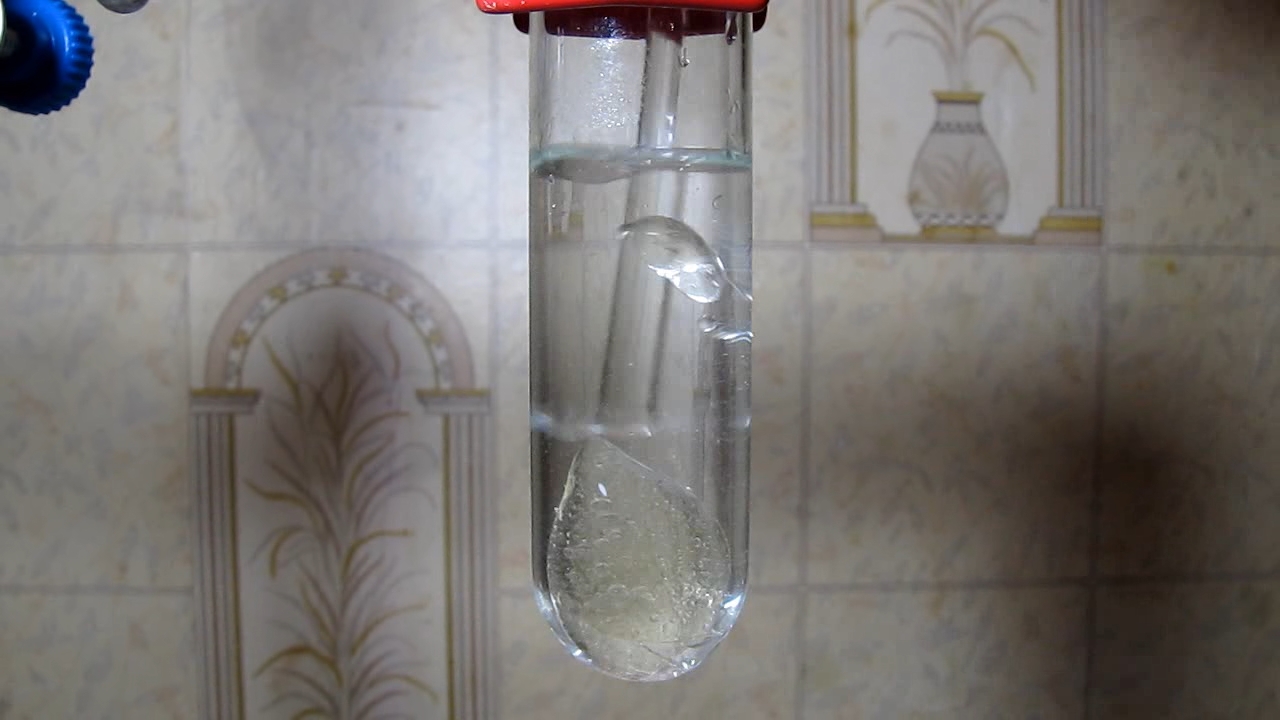
|
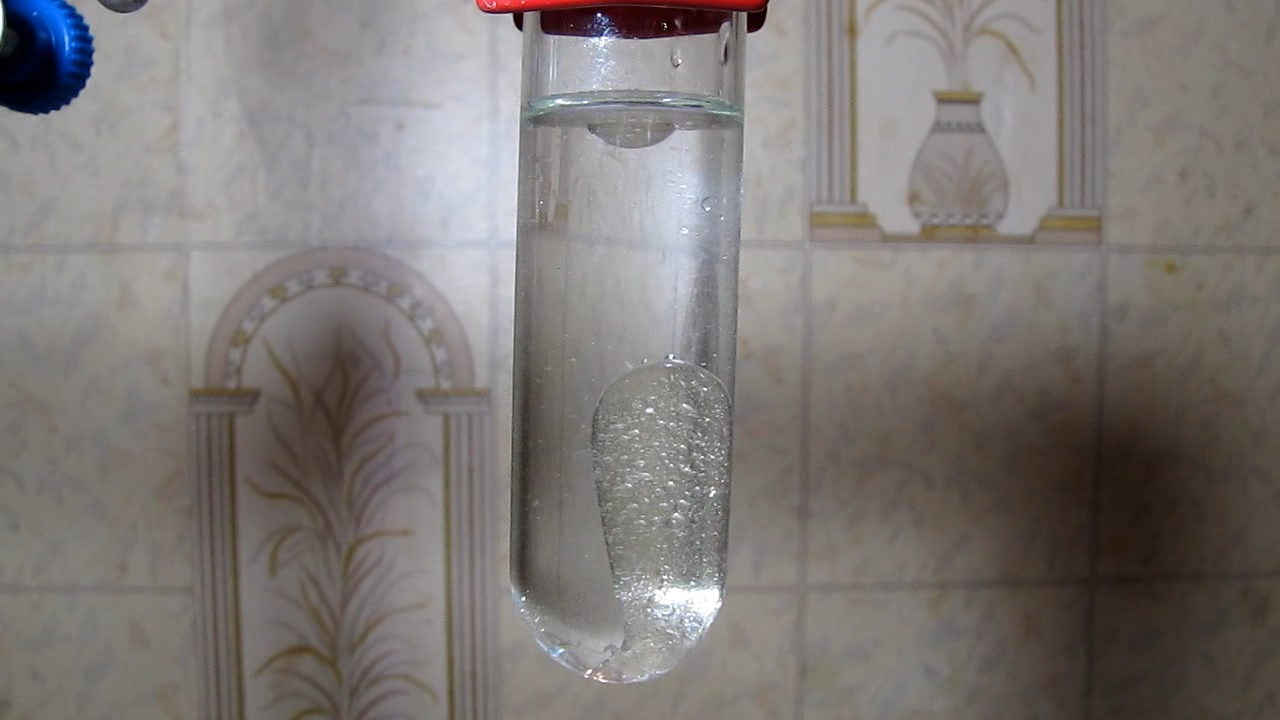
|
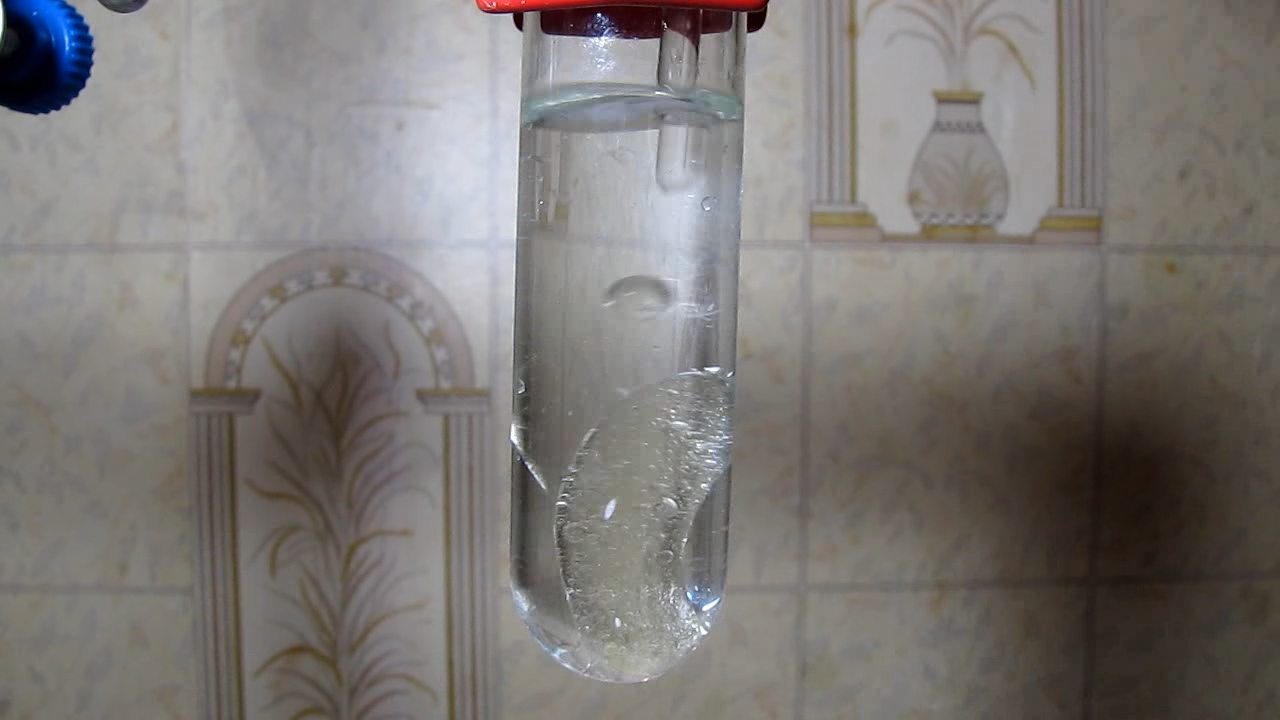
|
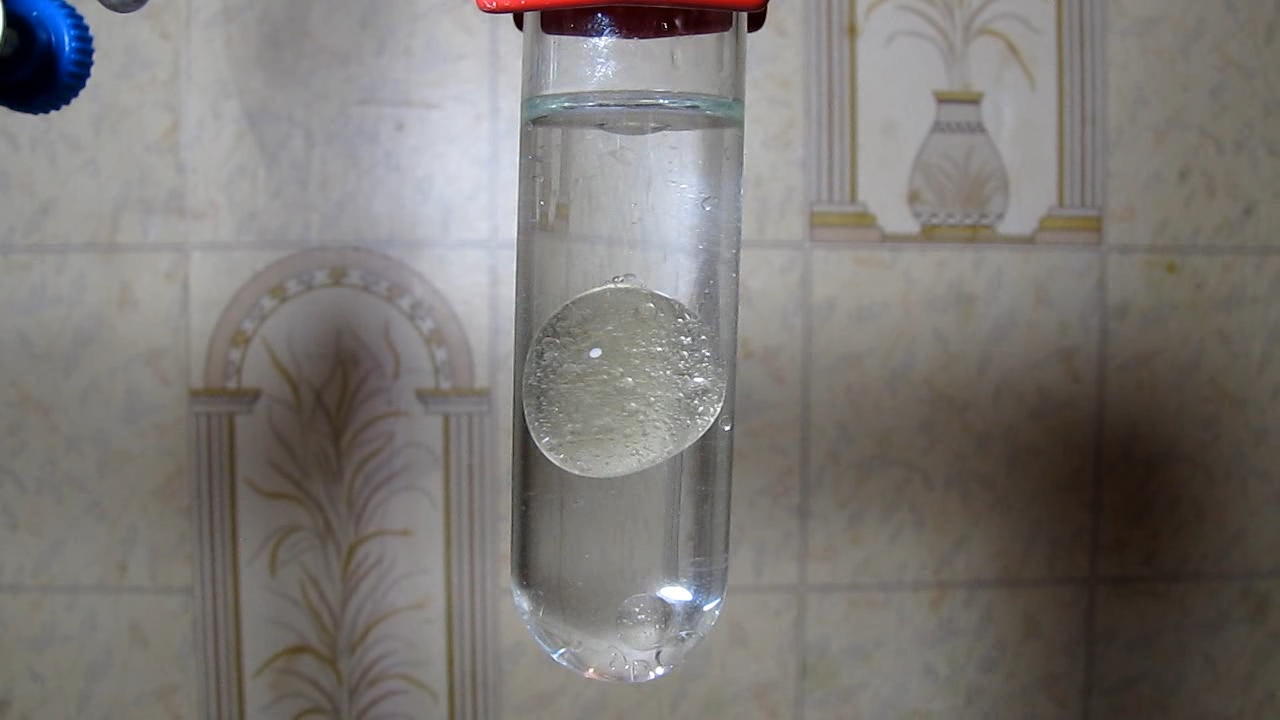
|
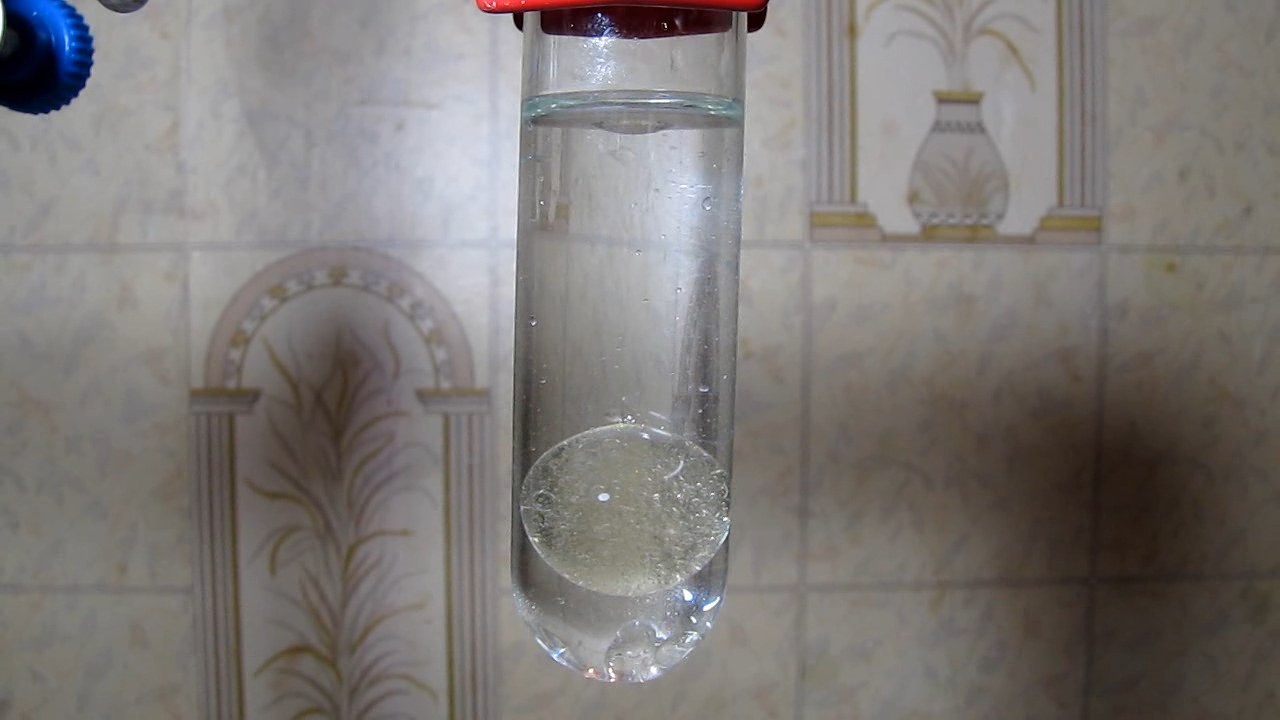
|
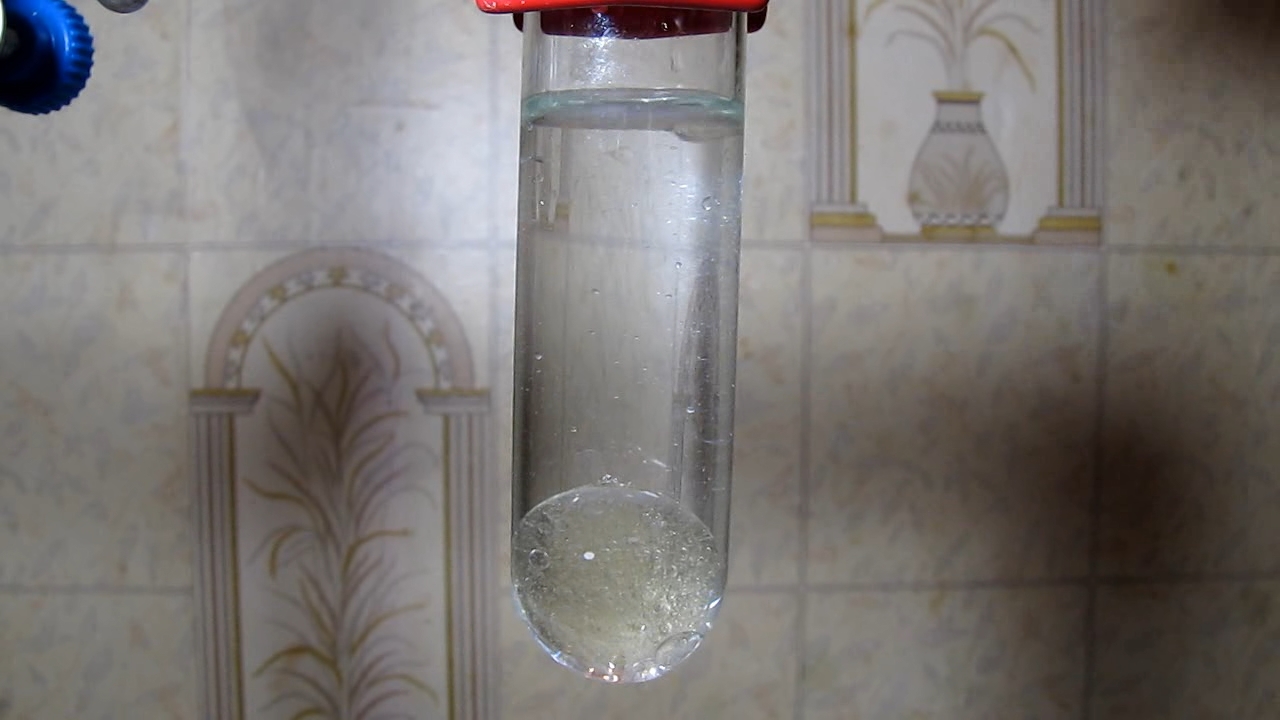
|

|

|
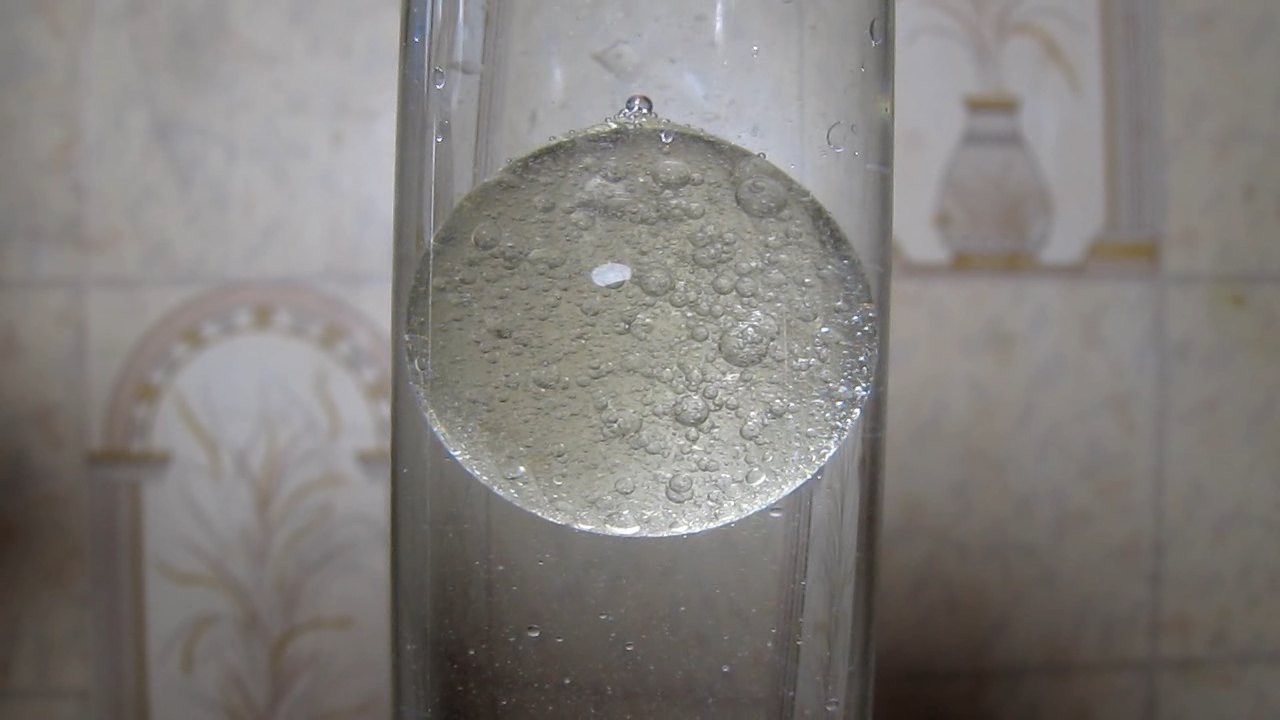
|
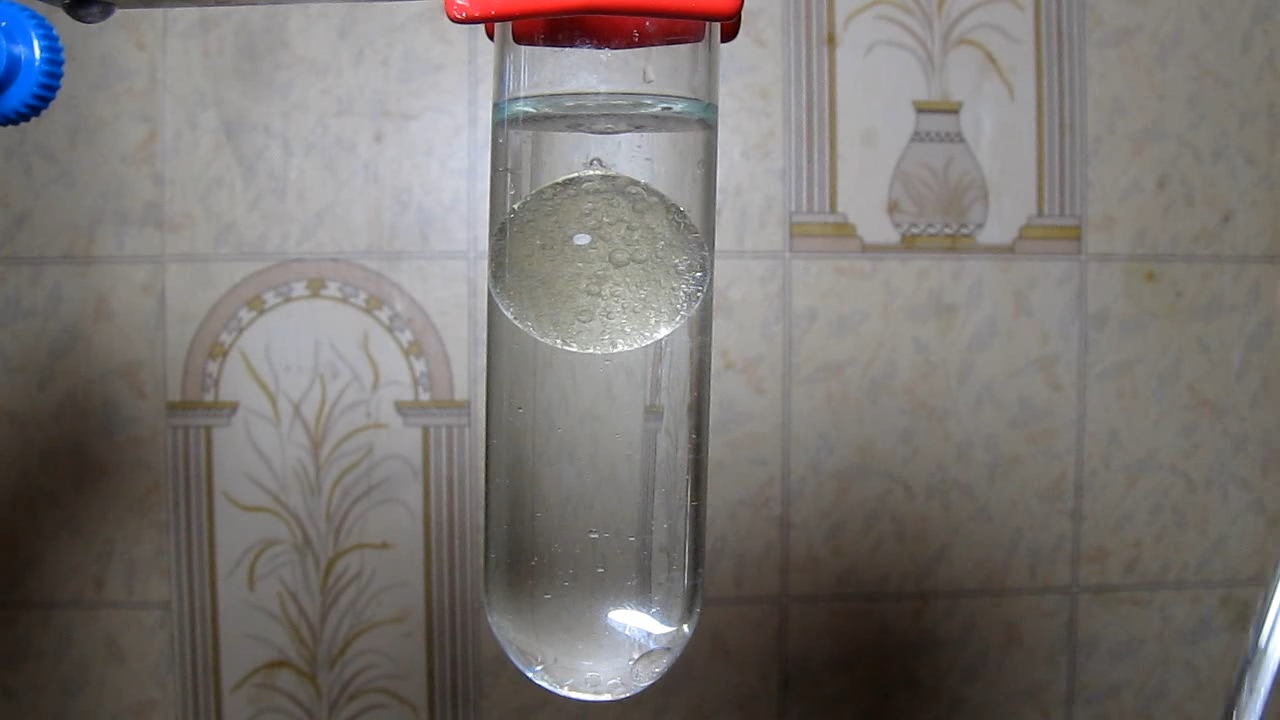
|

|
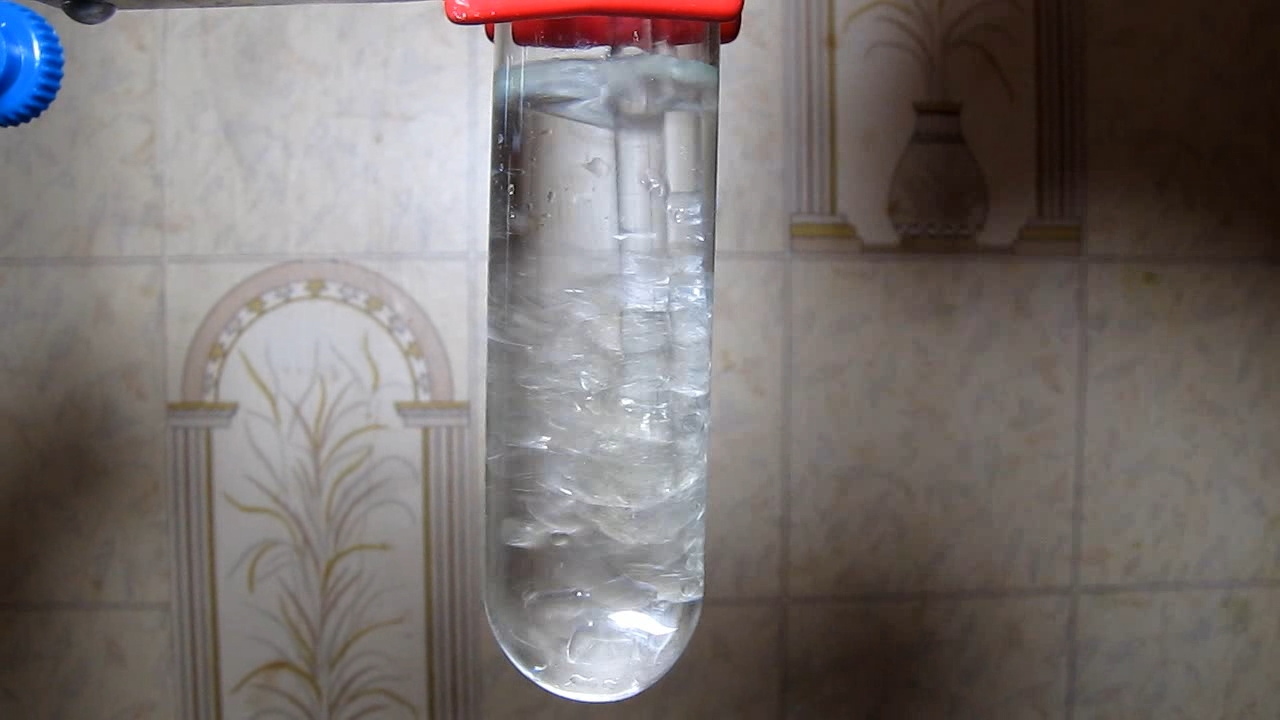
|
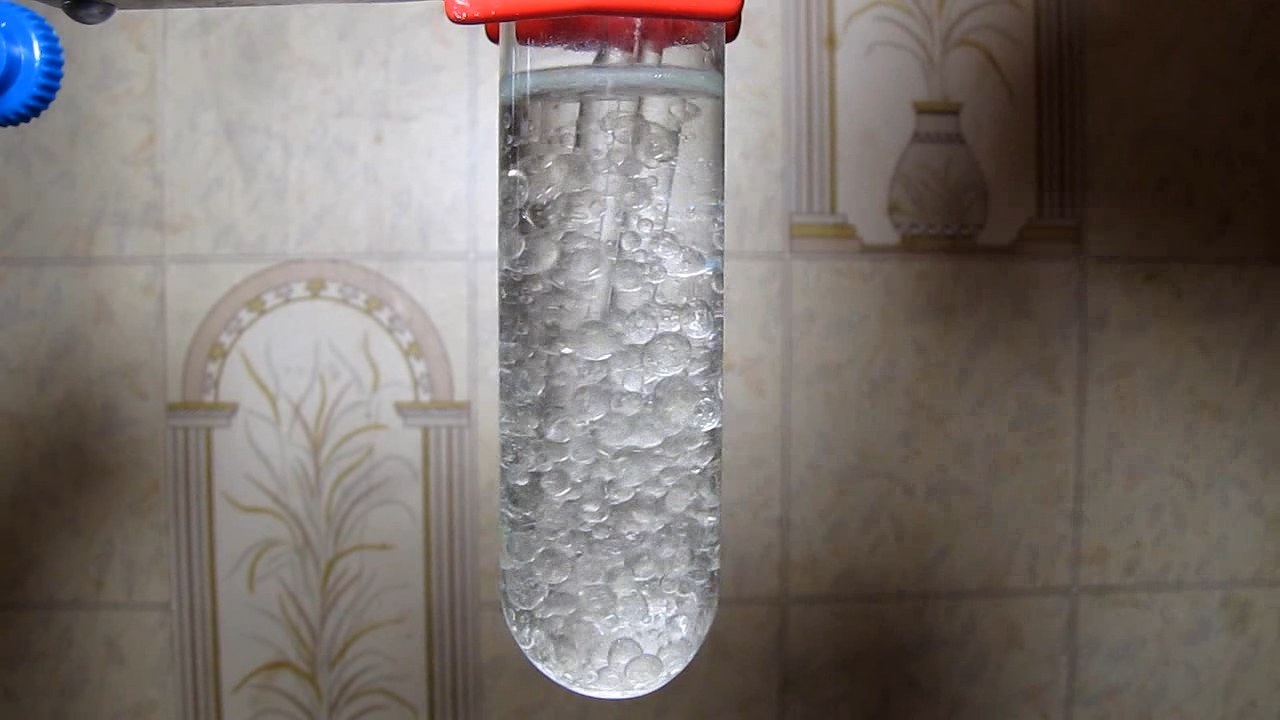
|

|
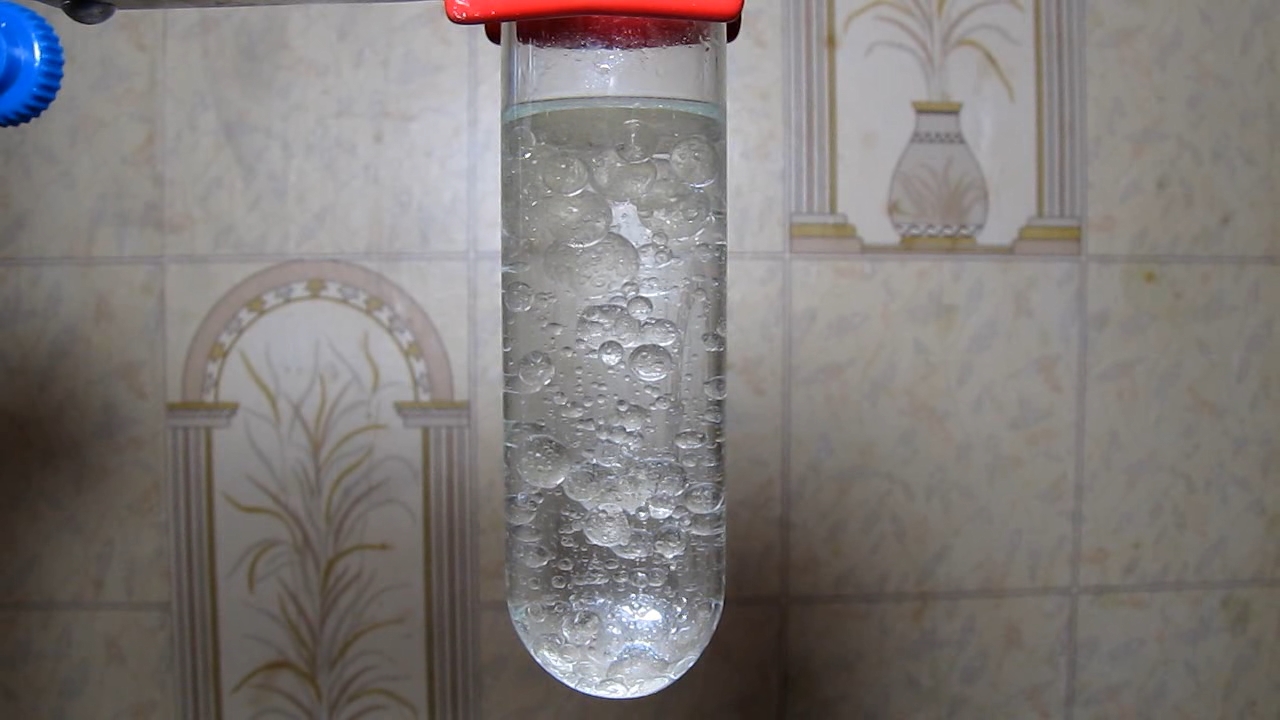
|

|
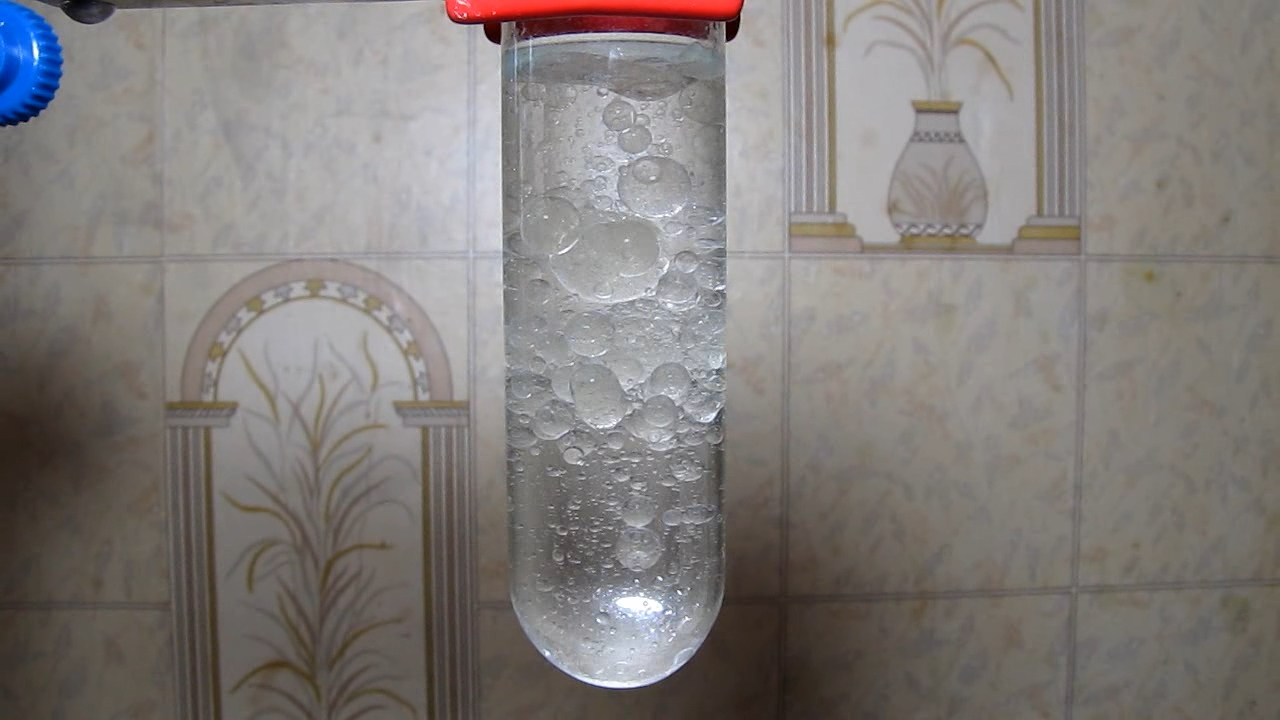
|
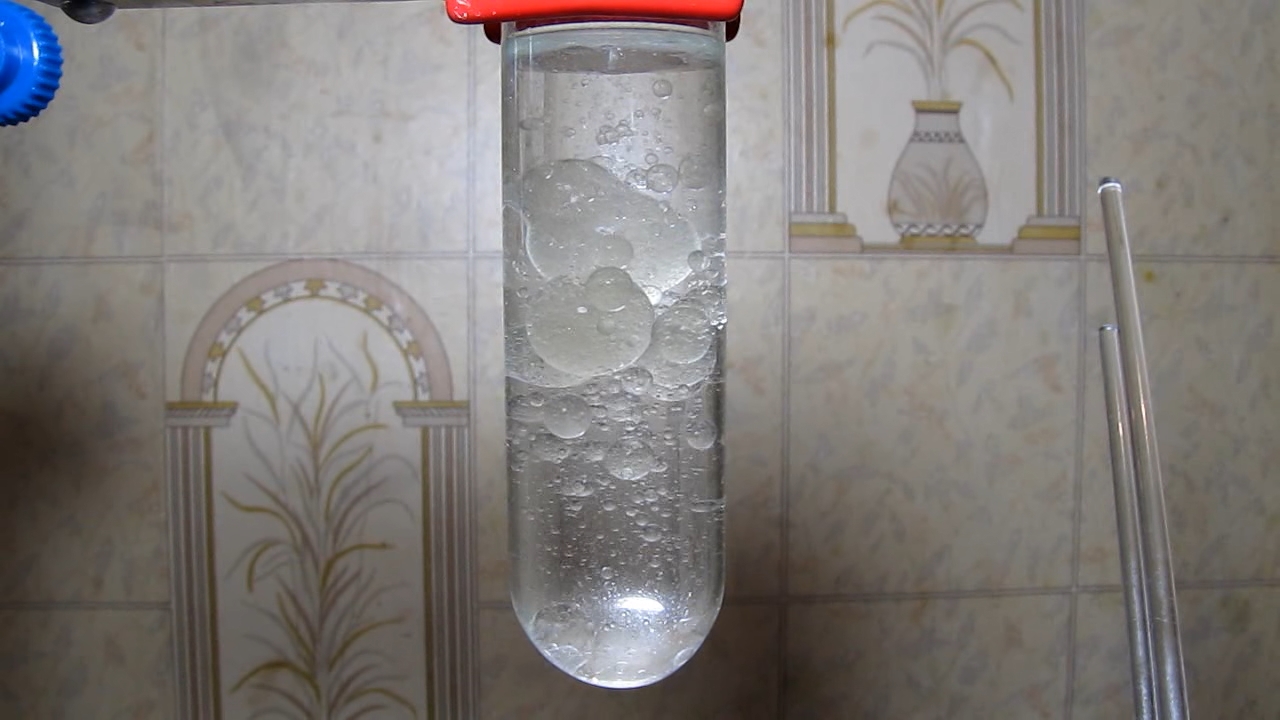
|
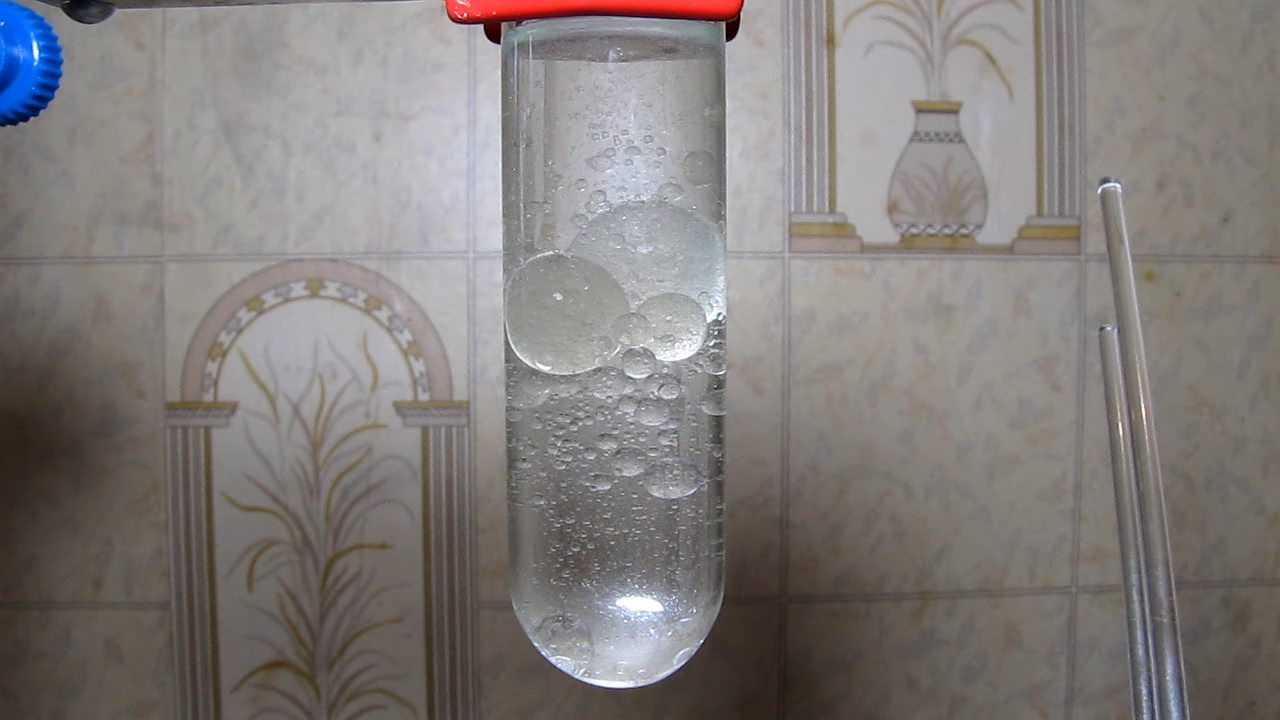
|
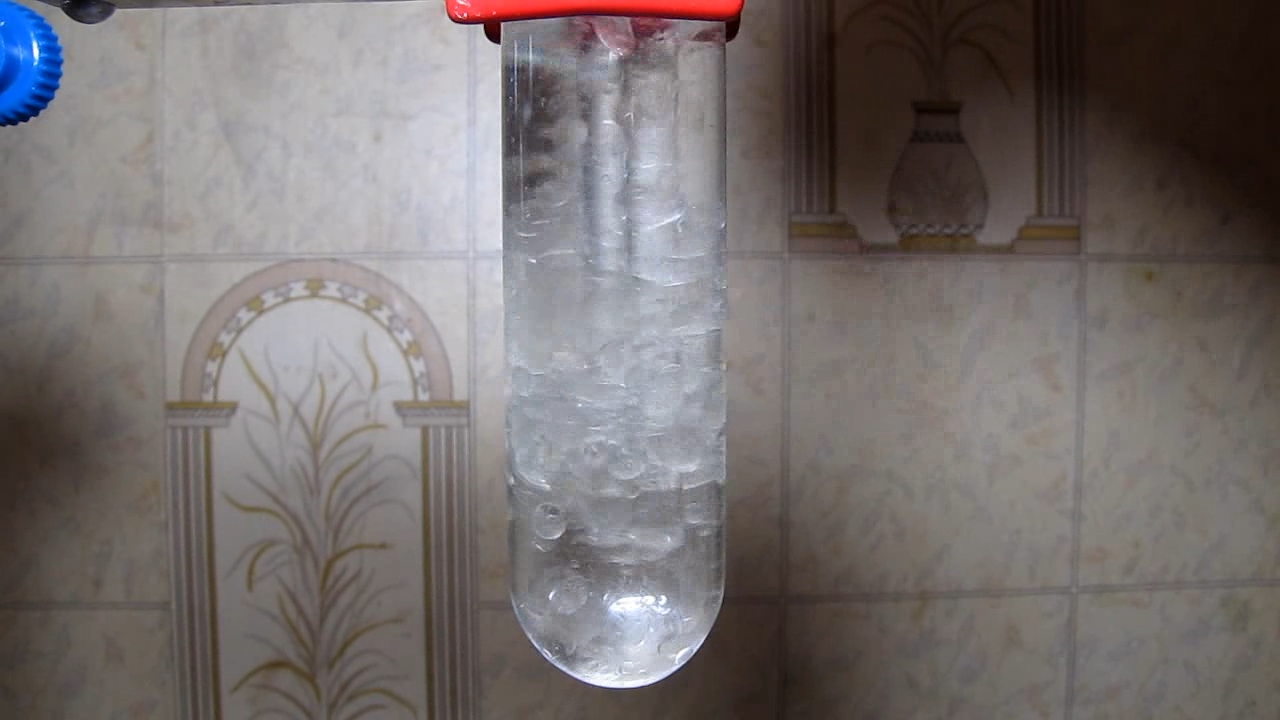
|
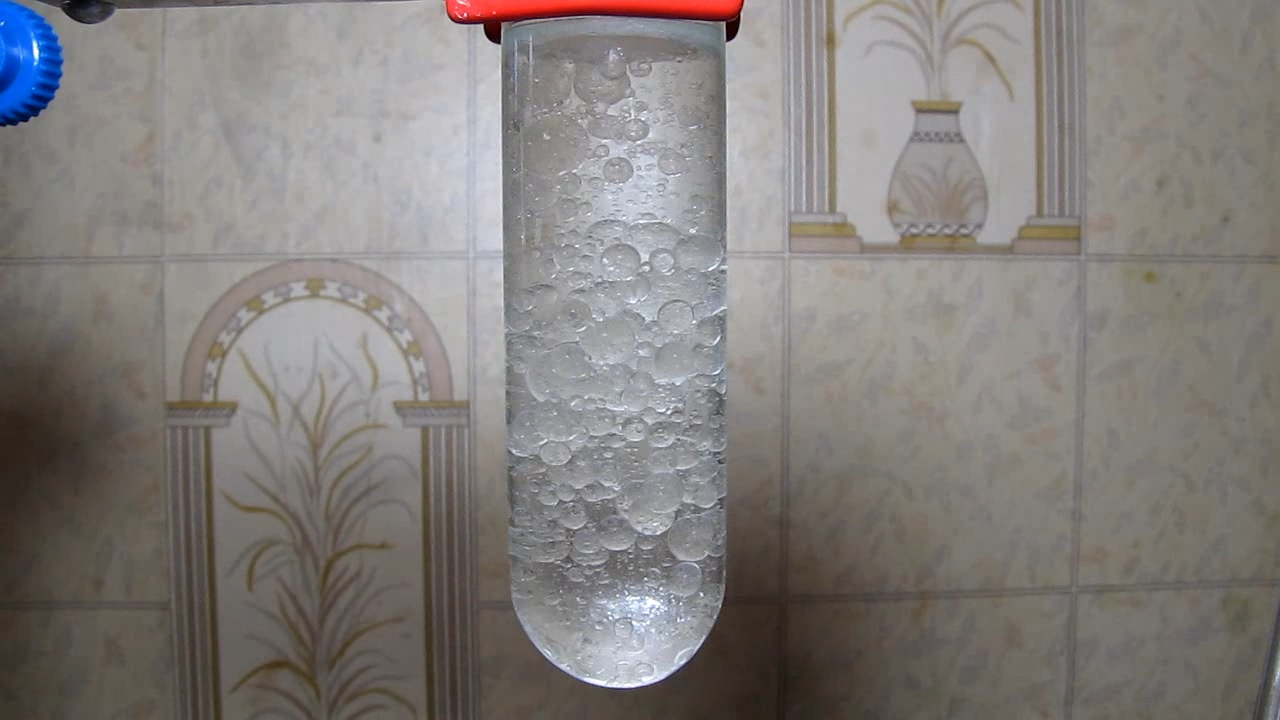
|

|
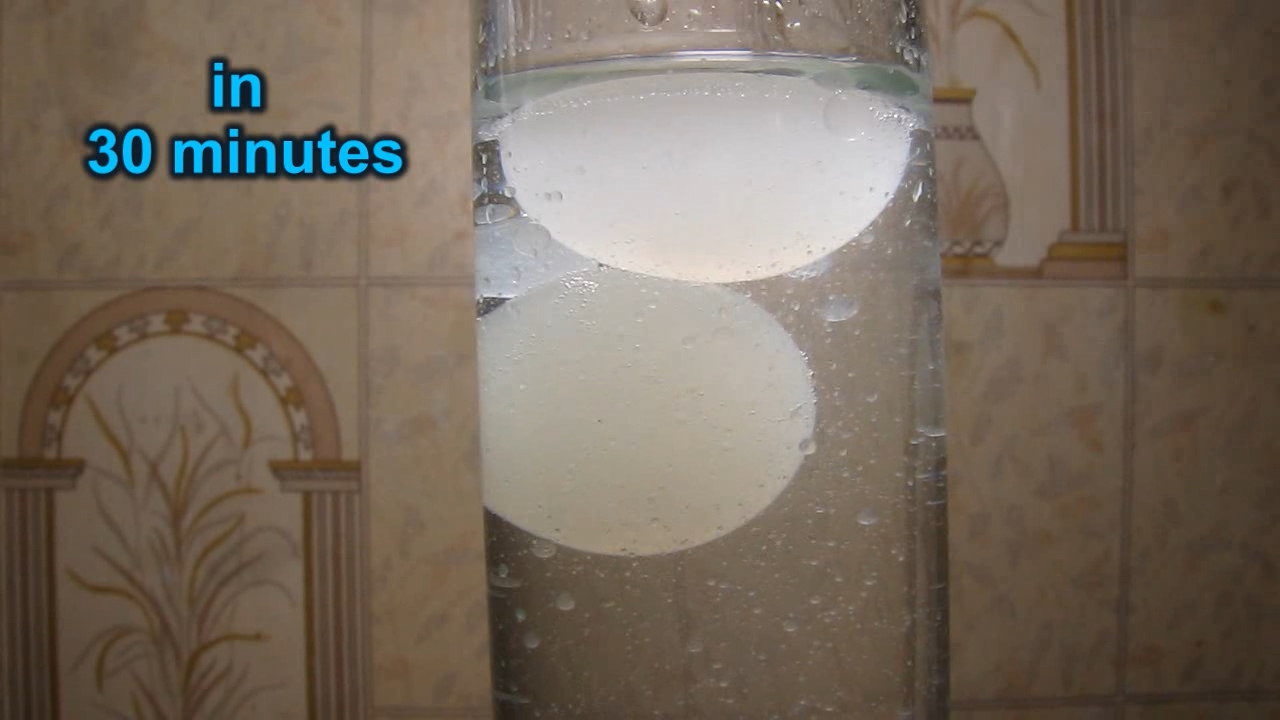
|
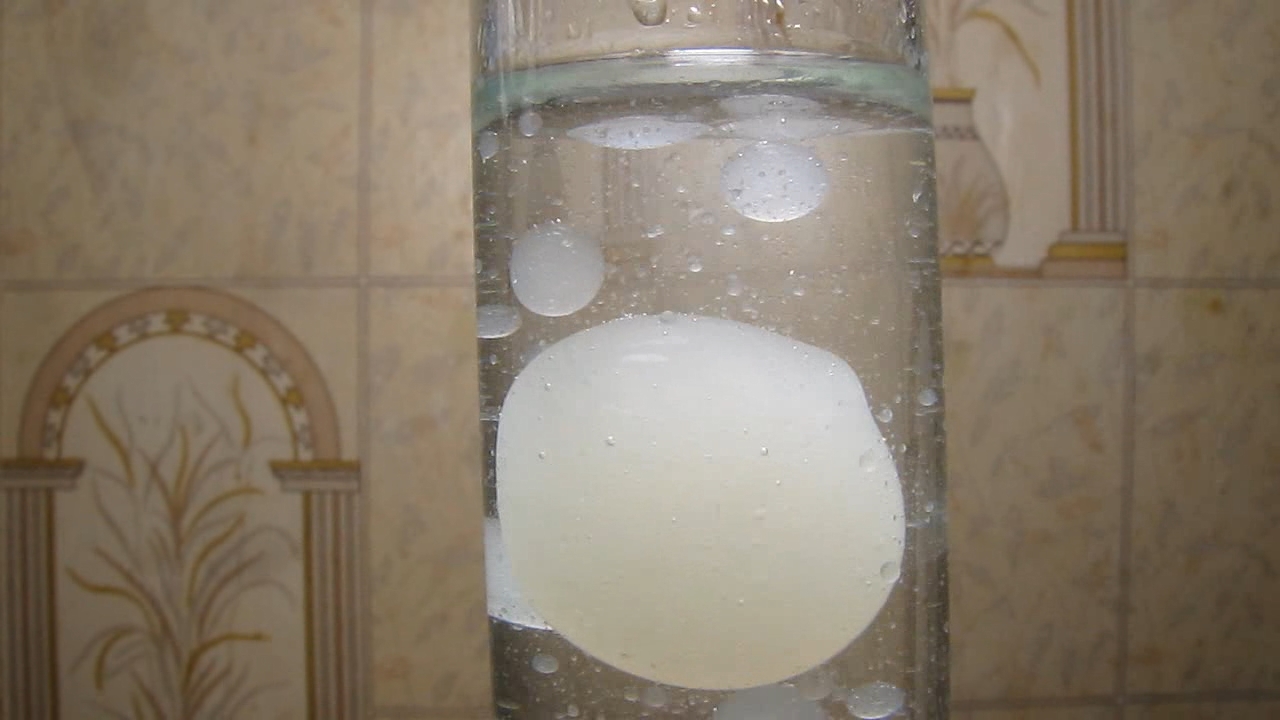
|
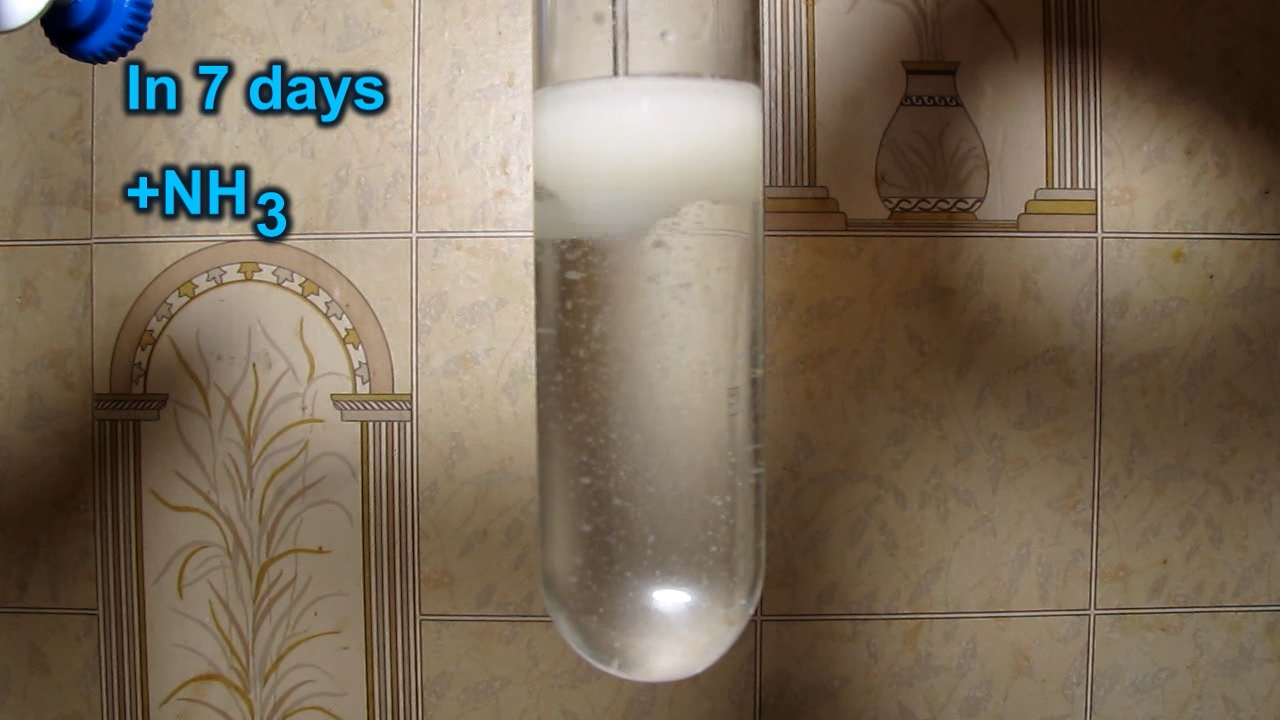
|
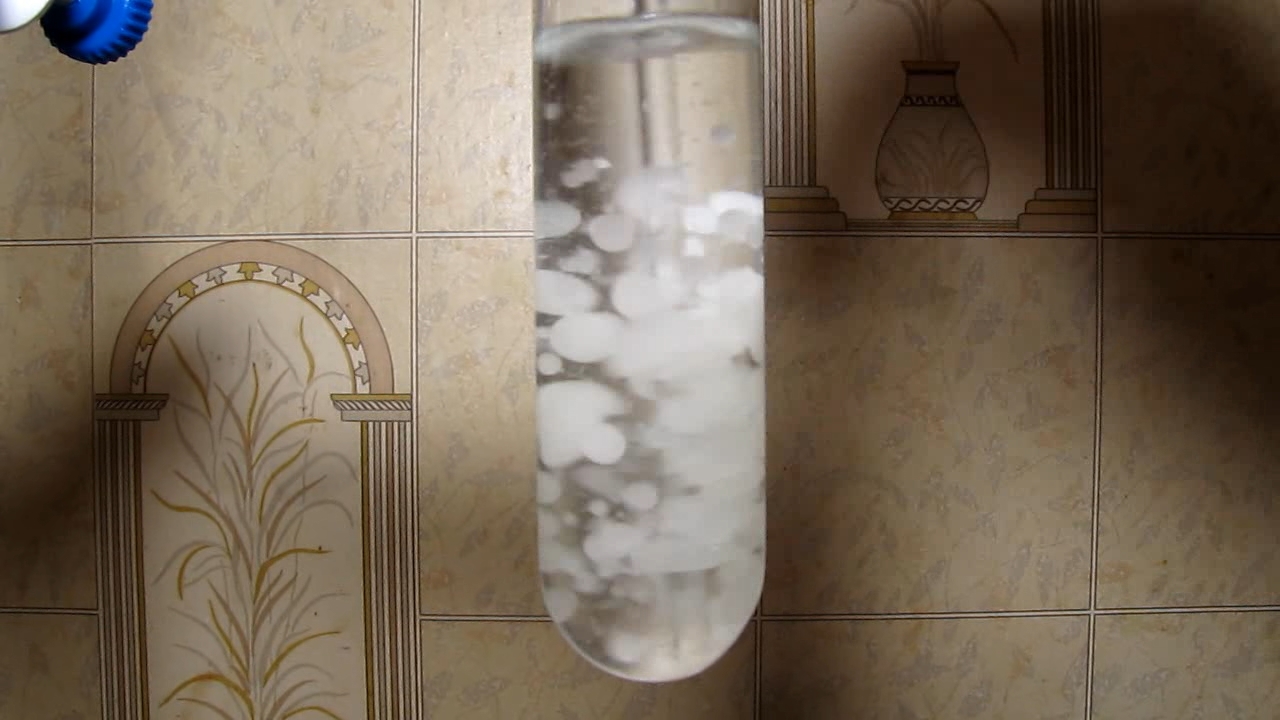
|

|